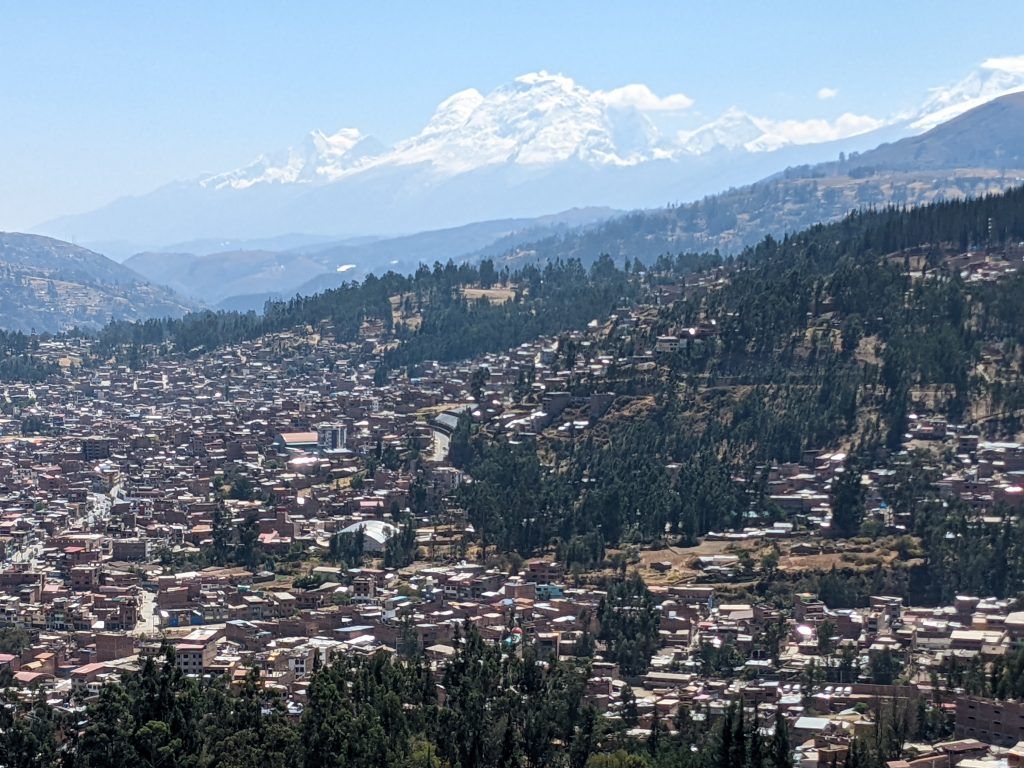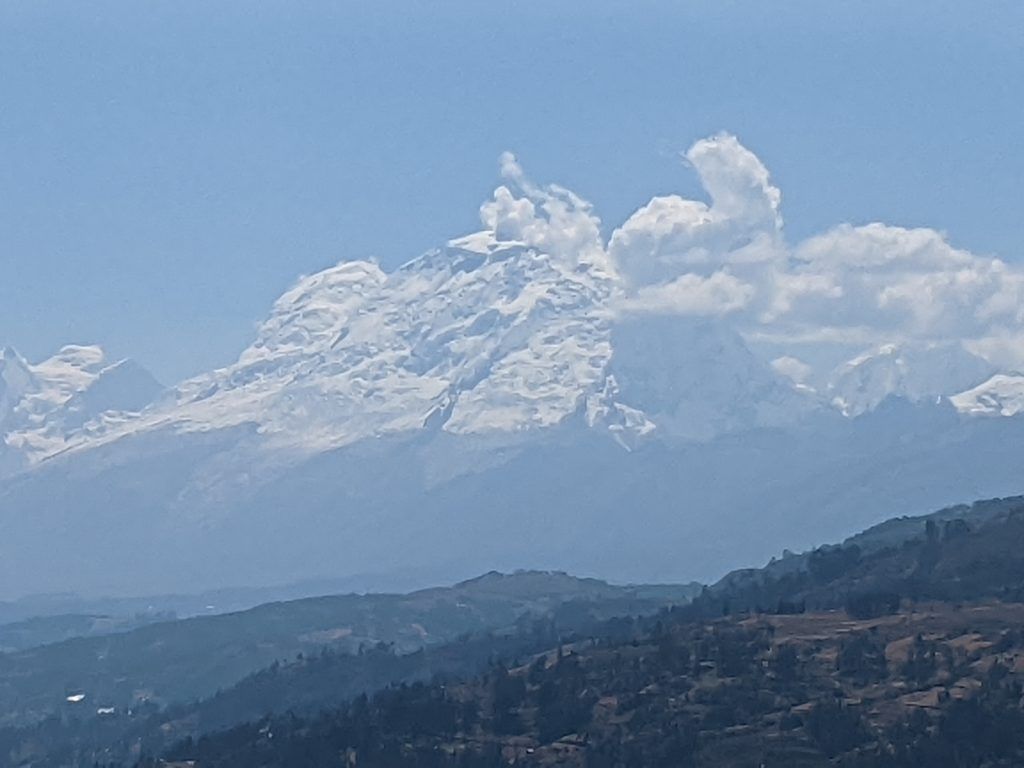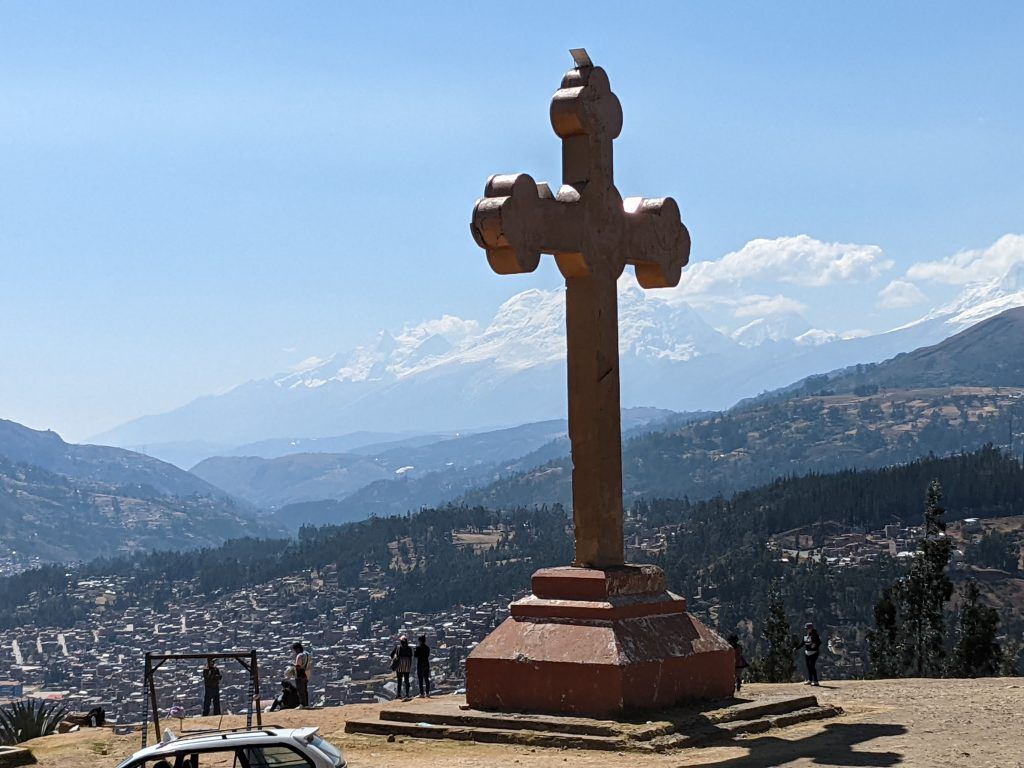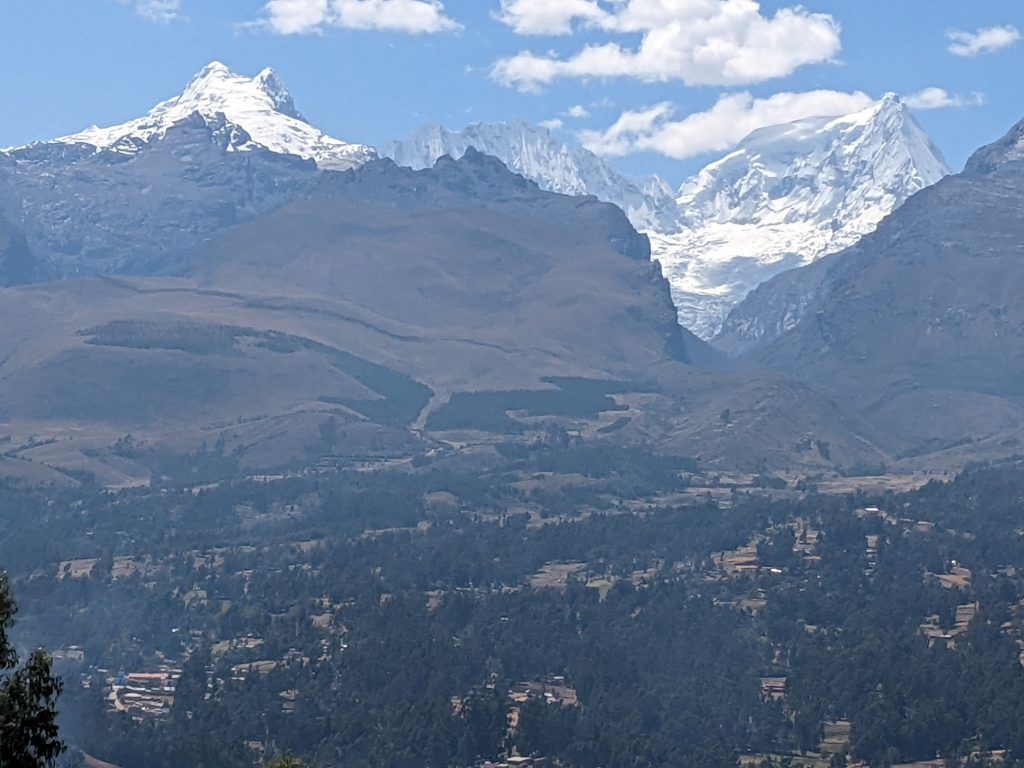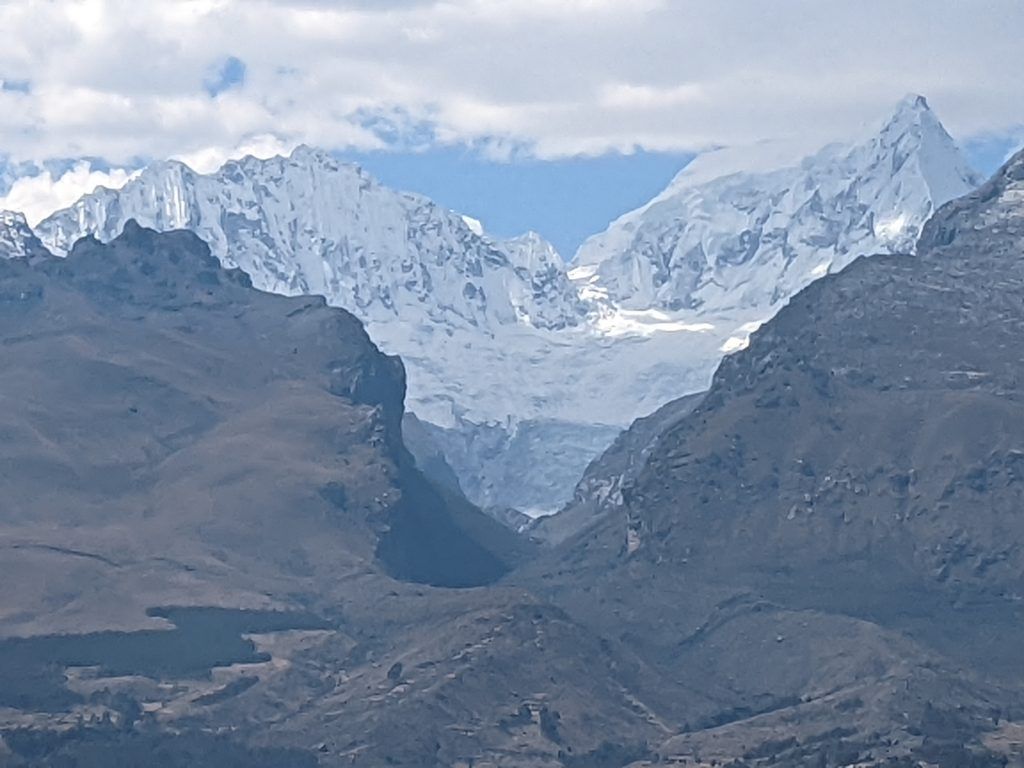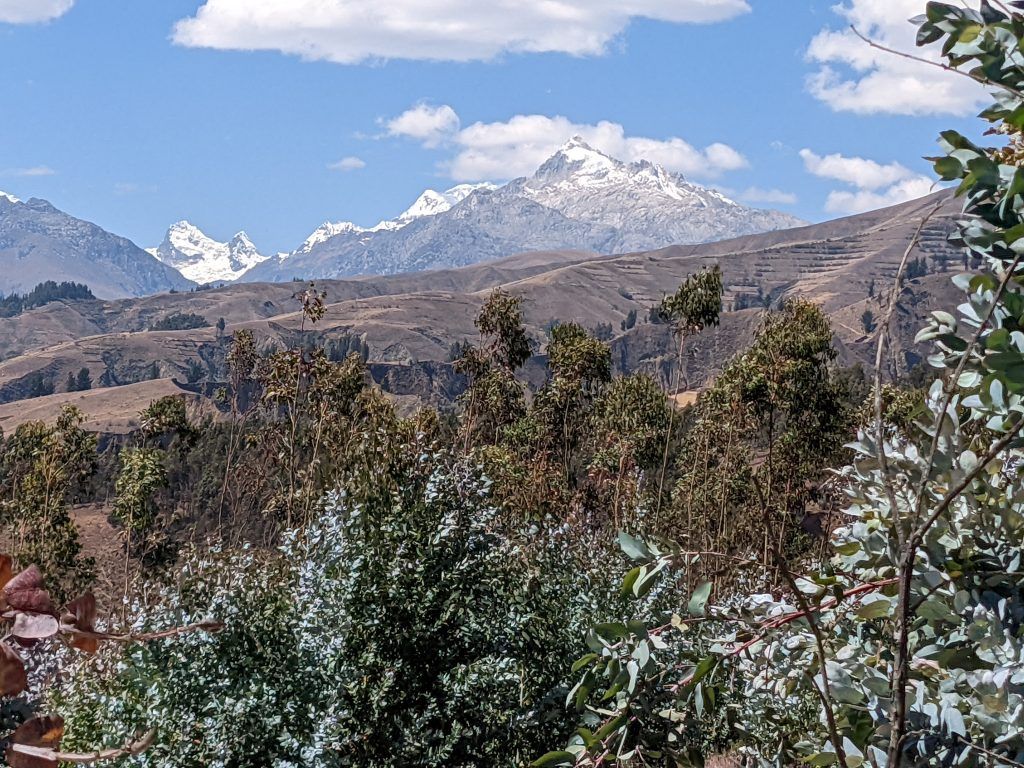Huaraz is not a particularly distinctive city. Its uniqueness is in its proximinity to a vast array of day hikes and treks into the surrounding Andes. It’s located in the Callejon de Huaylas valley, wedged between the Cordillera Blanca mountains to the east and the Cordillera Negra mountains to the west. So while it sits at almost 2 miles high, at around 3,050 meters (about 10,000 feet), it’s still dwarfed by numerous 6,000 meter (20,000 feet) mountains surrounding it.
I had originally planned to do a multi day trek, but things changed and I ended up doing a number of wonderful day trips instead. Each of these are documented below, after this section on Huaraz.
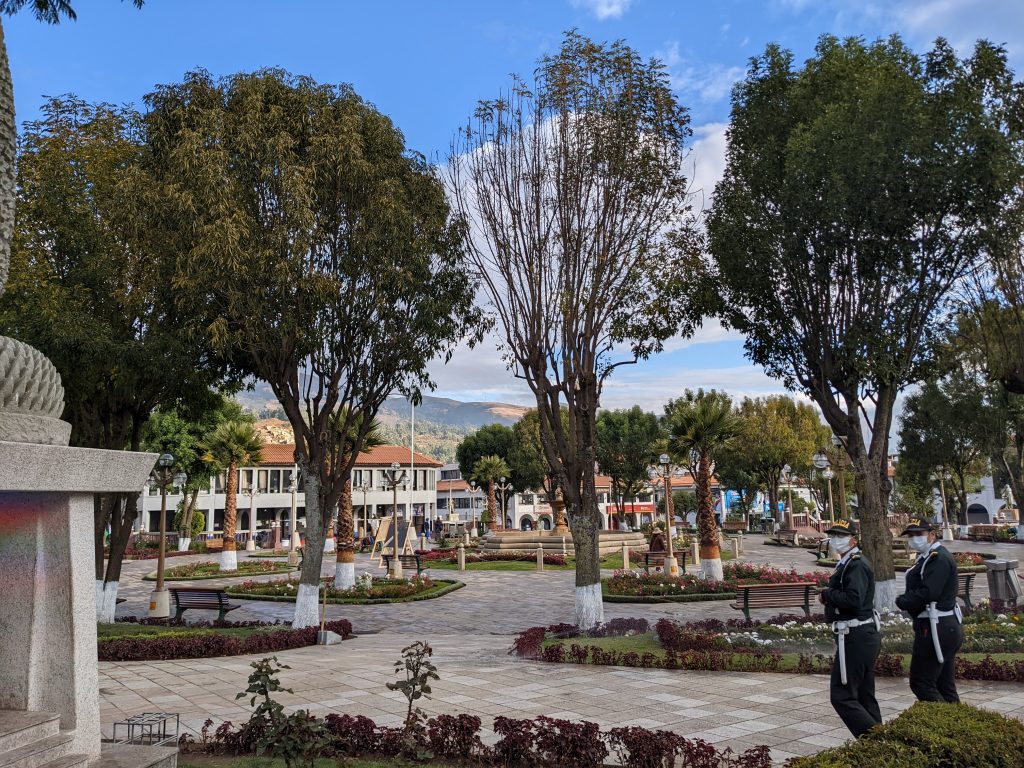
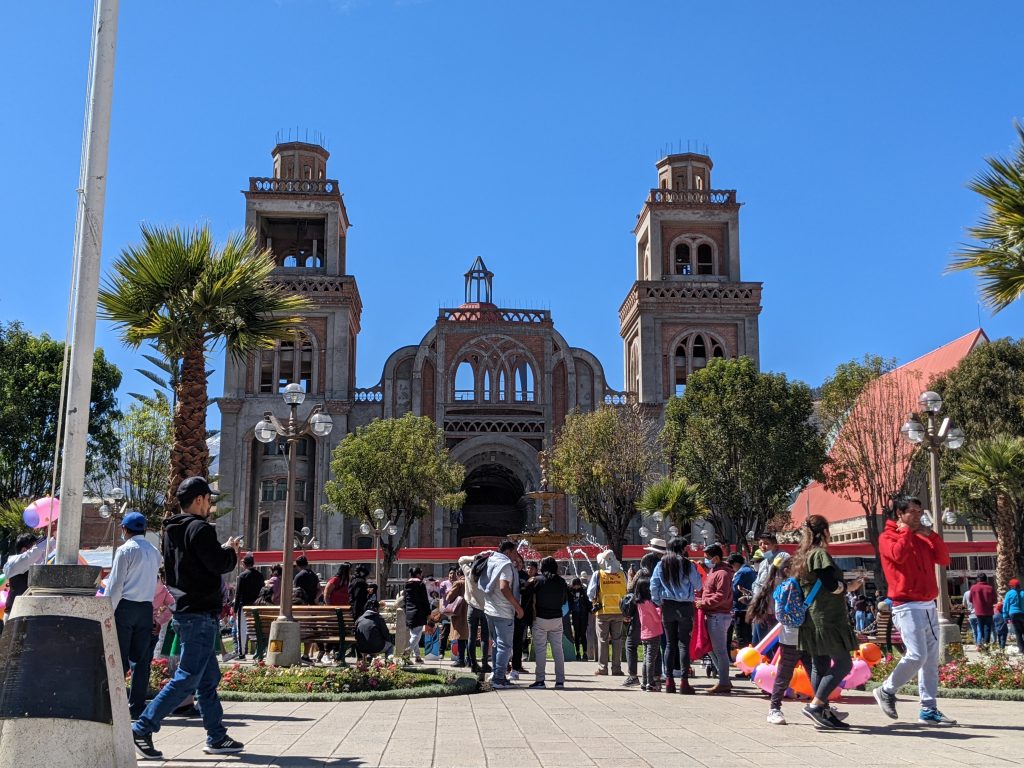
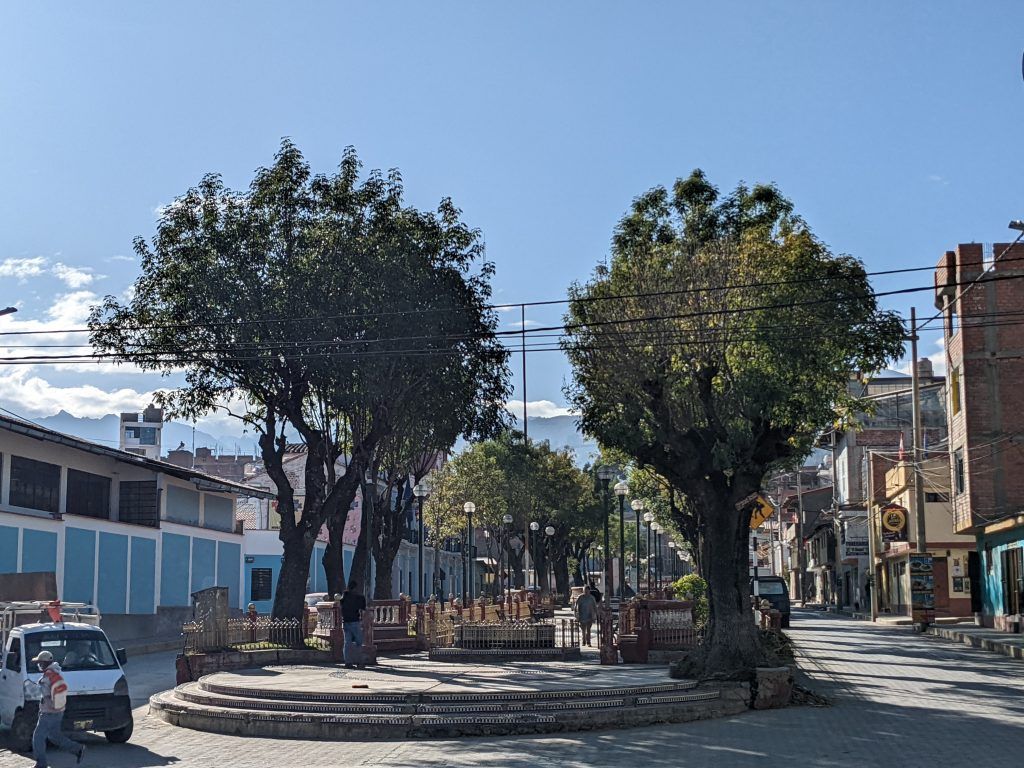
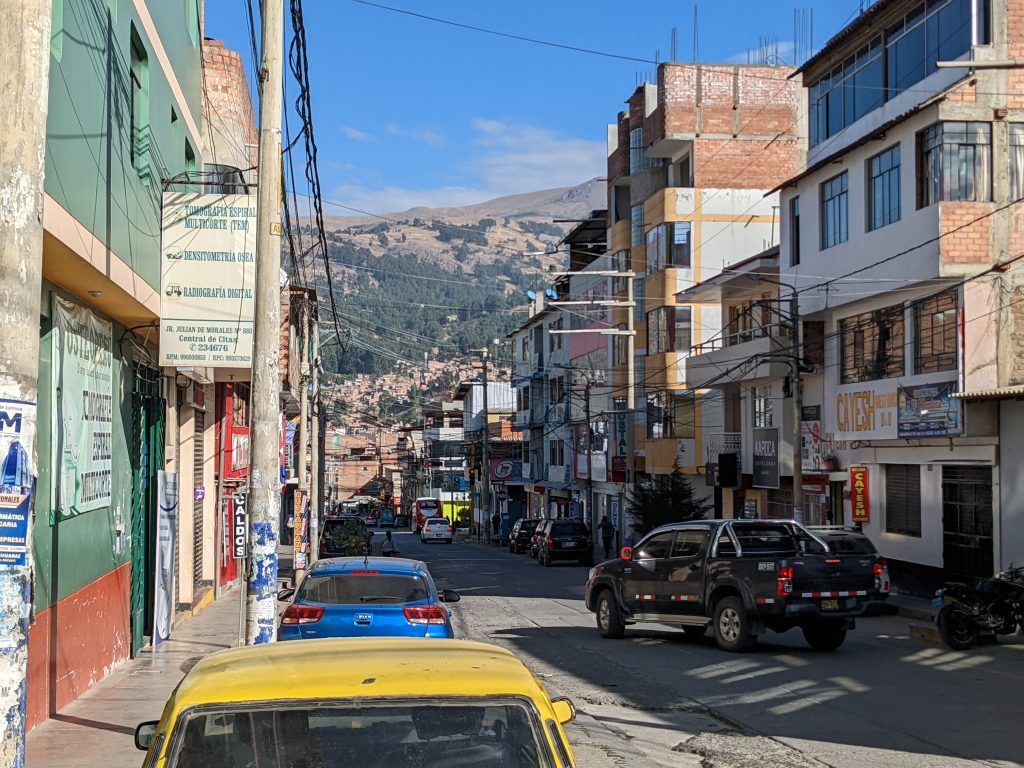
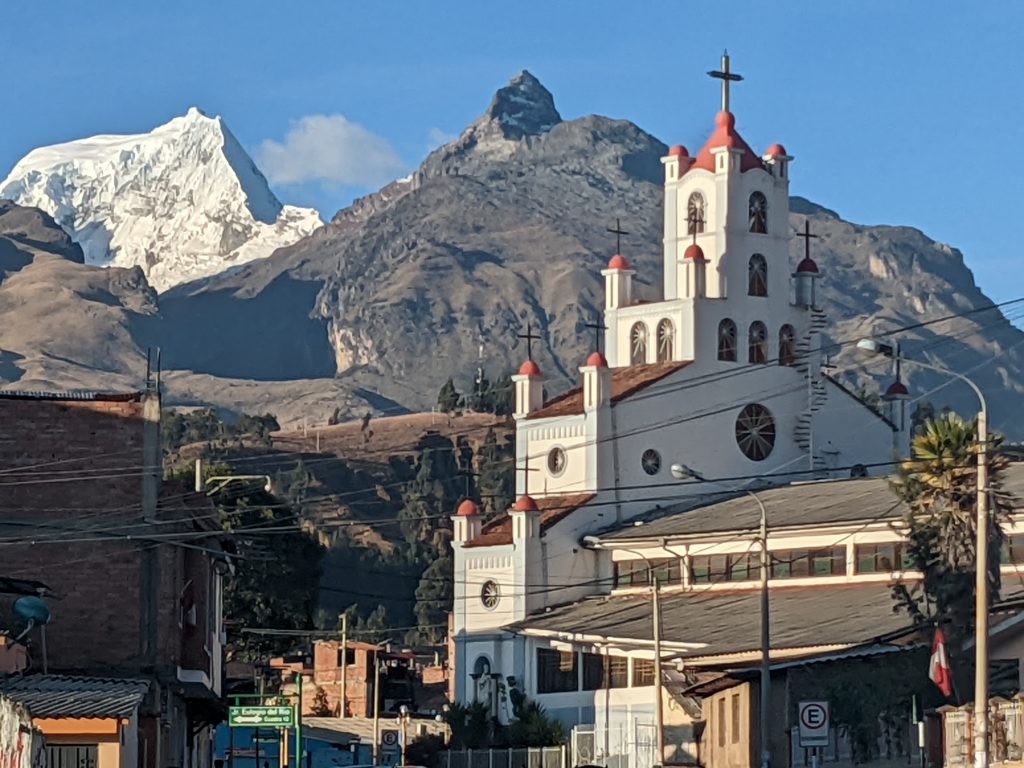
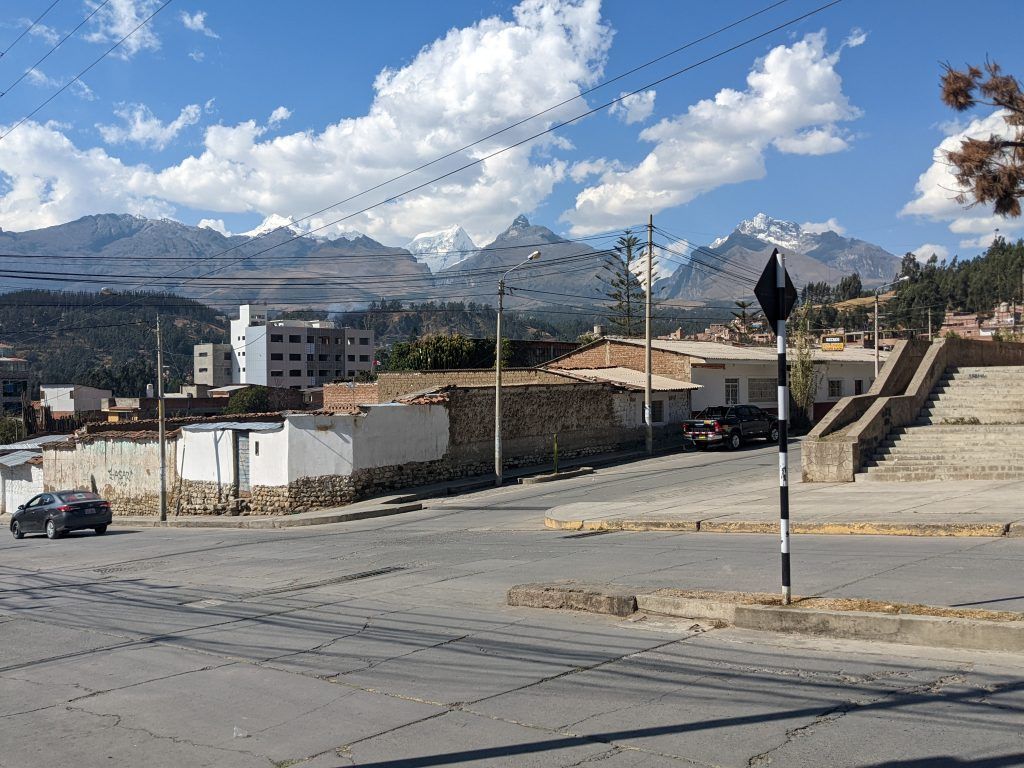
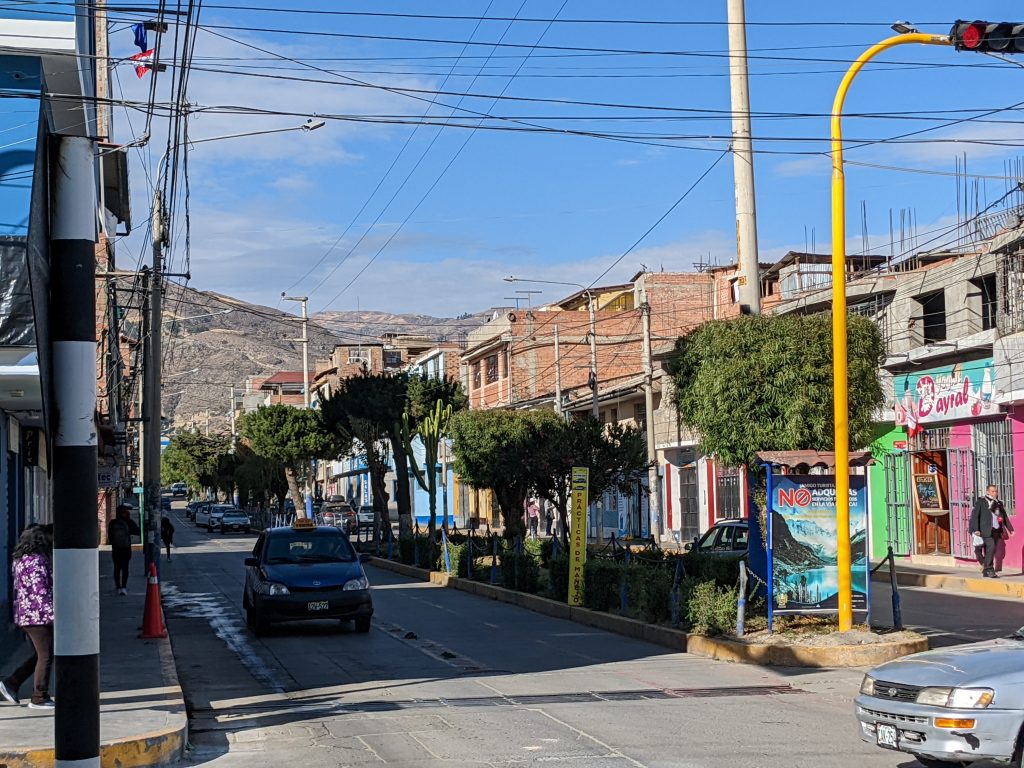
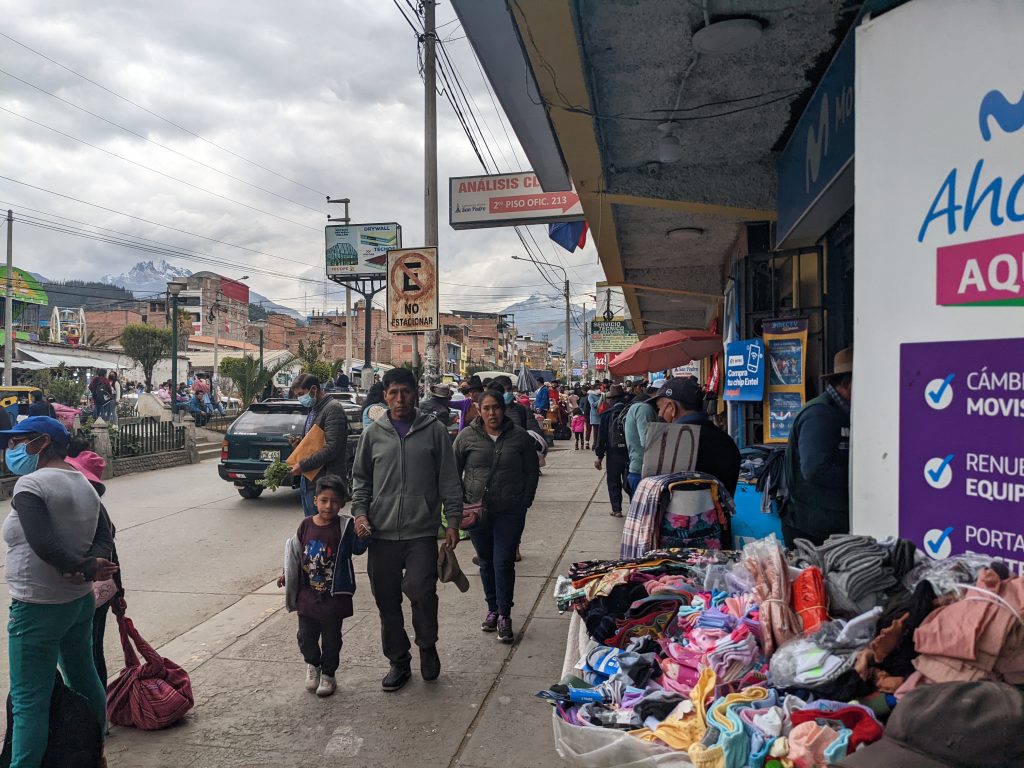
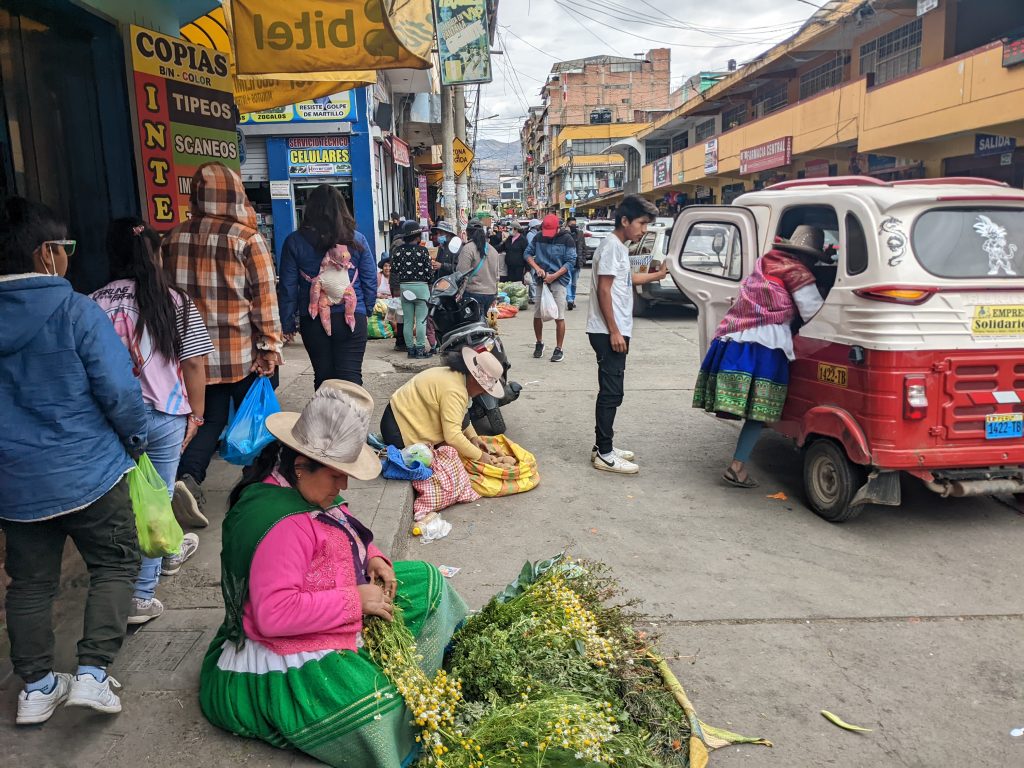
Coca is everywhere in Peru. You can buy the leaves, have it in tea, and even have it as candy, as shown below. But you can’t take it with you. Since it’s the core product for cocaine, taking anything to the US can potentially get you arrested.
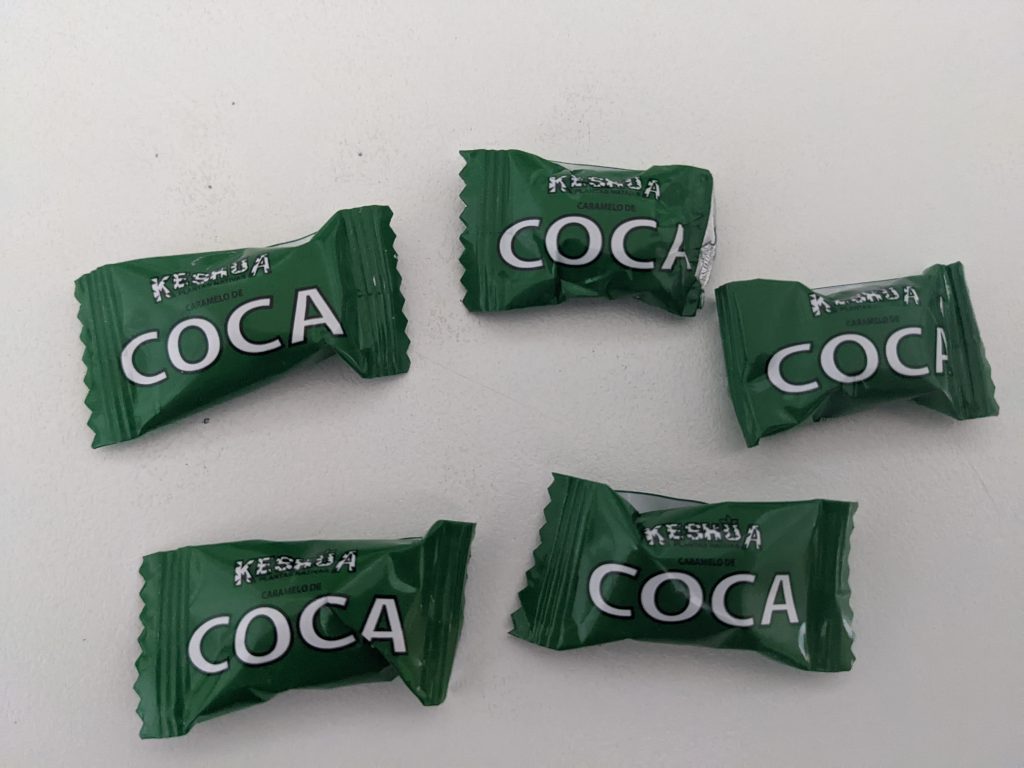
I had a large, comfortable Airbnb apartment about a 10-15 minute walk from the main plaza.
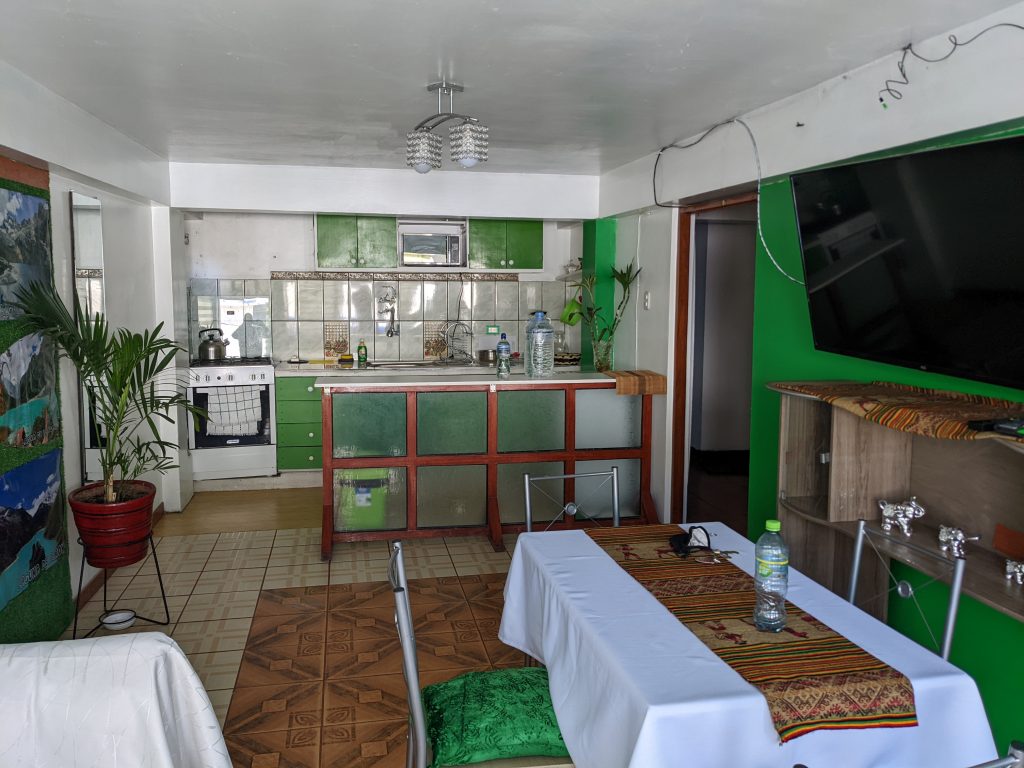
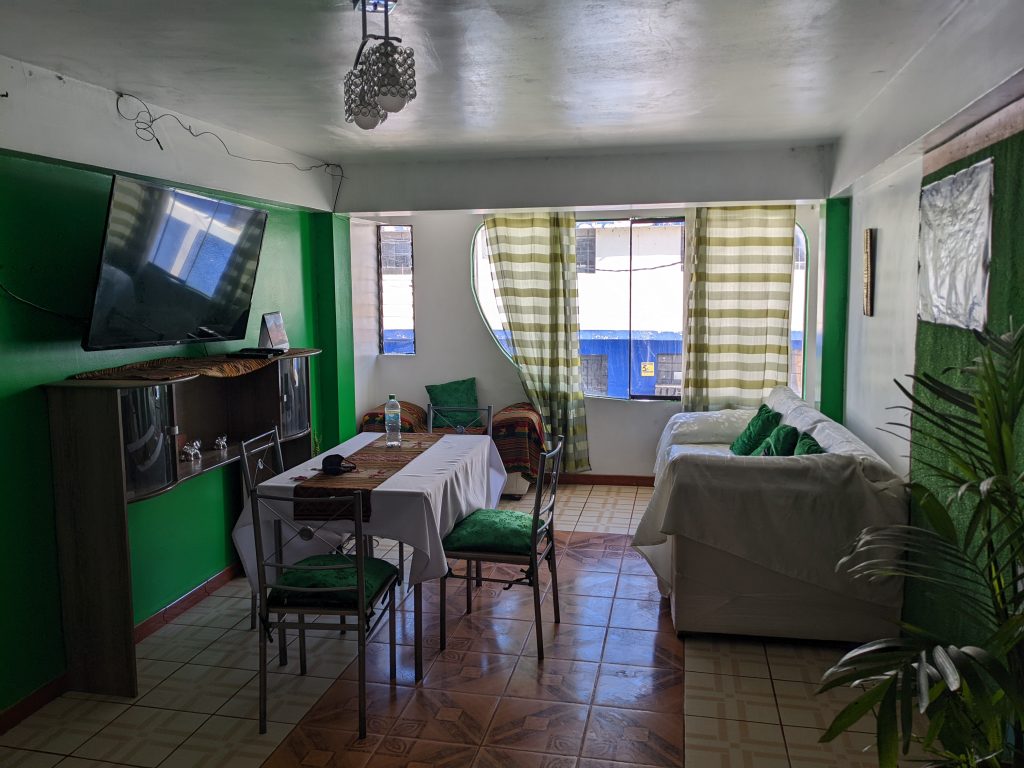
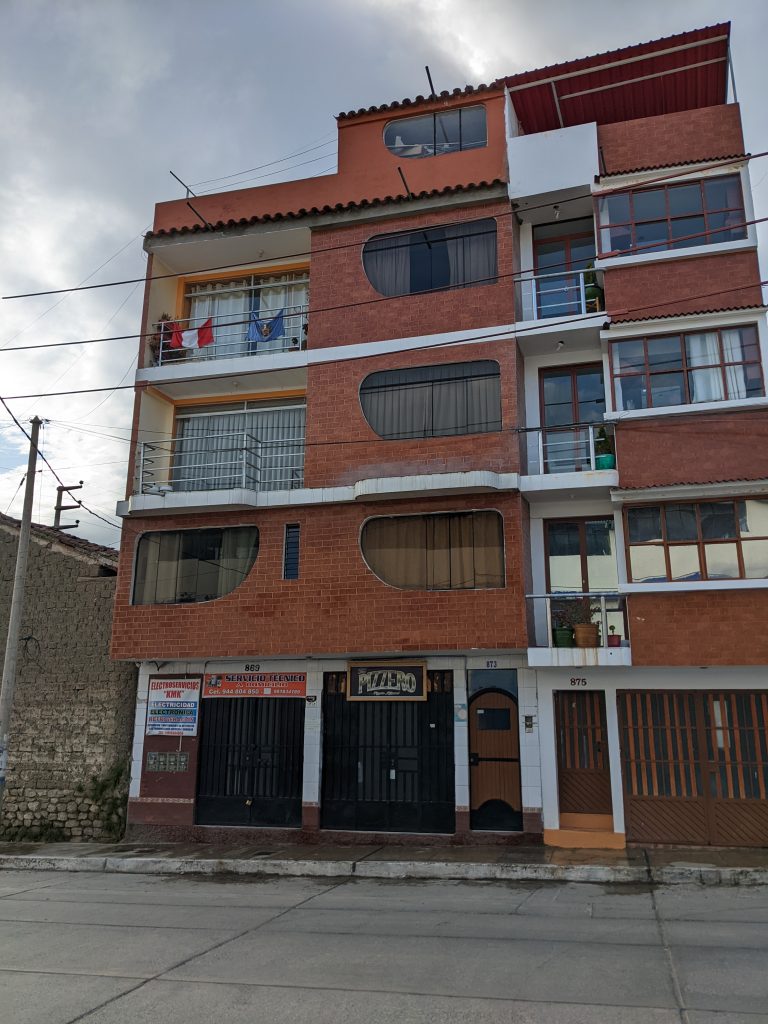
Laguna Peron
Laguna Paron is the largest lake in the Cordillera Blanca mountain range. It stands at around 4,200 meters (13,800 feet) above sea level. The water is a mesmorizing blue turquoise color. The lake is surrounded by numerous snowy peaked mountains, the most famous being the Artesonraju mountain, which is the basis for the Paramount Pictures logo (which was unfortunately partially blocked by clouds the day I visited).
On the way in we stopped at the town of Carhuaz, which has one of the most beautiful small town central plazas I’ve seen in Latin America.
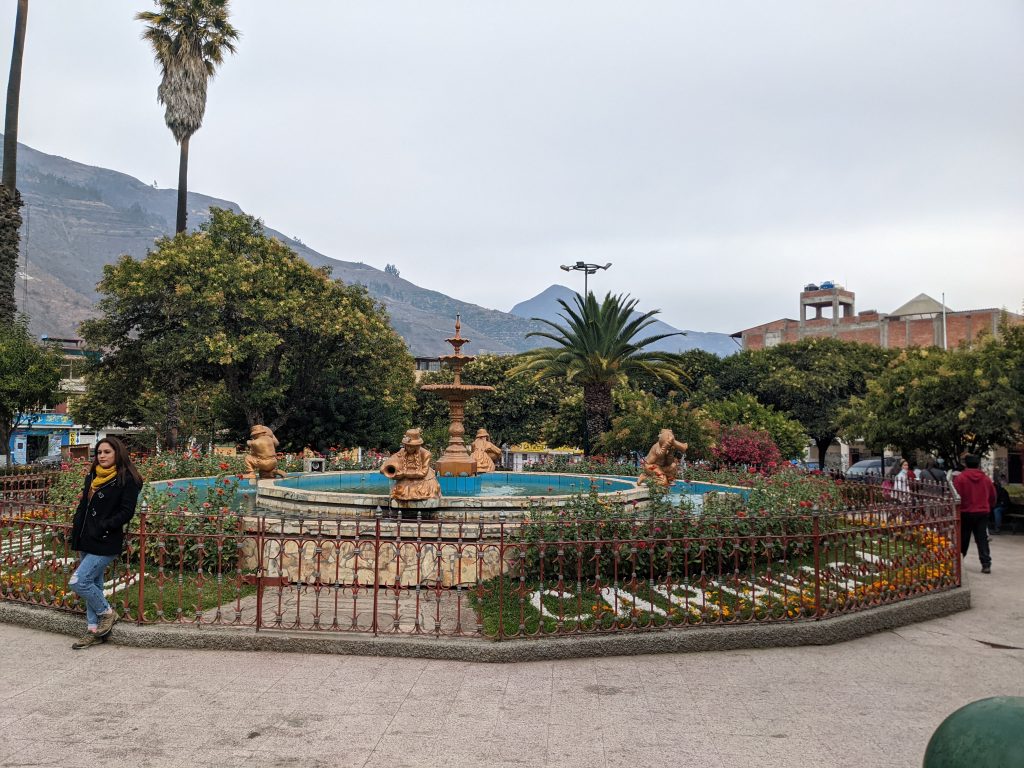
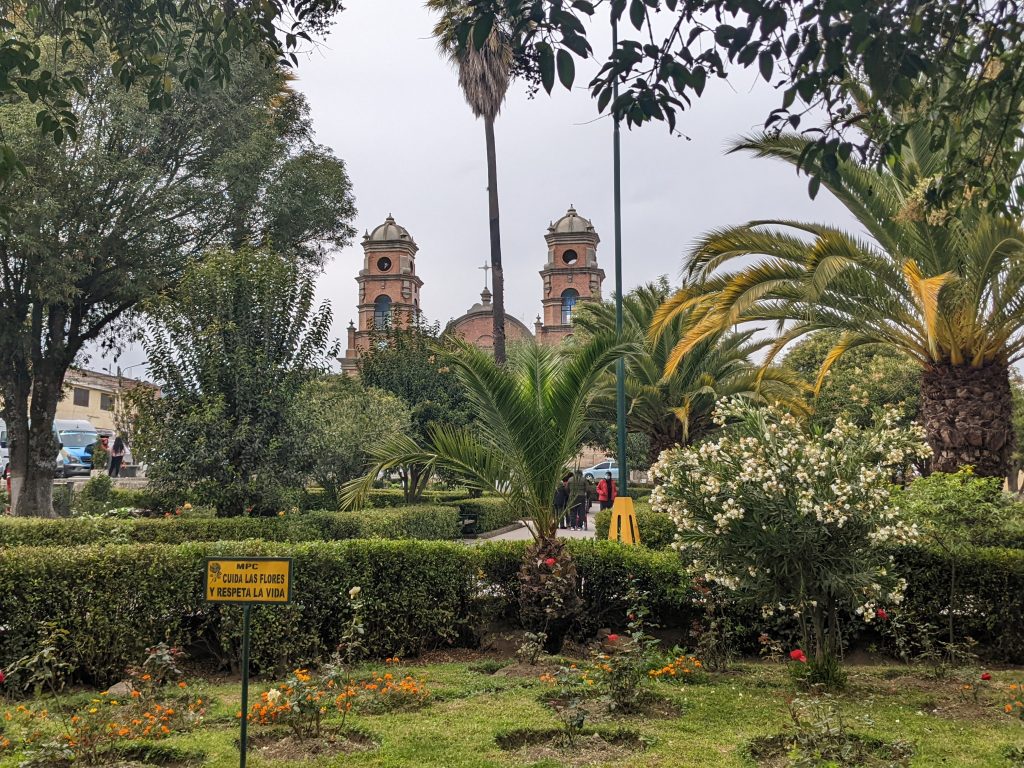
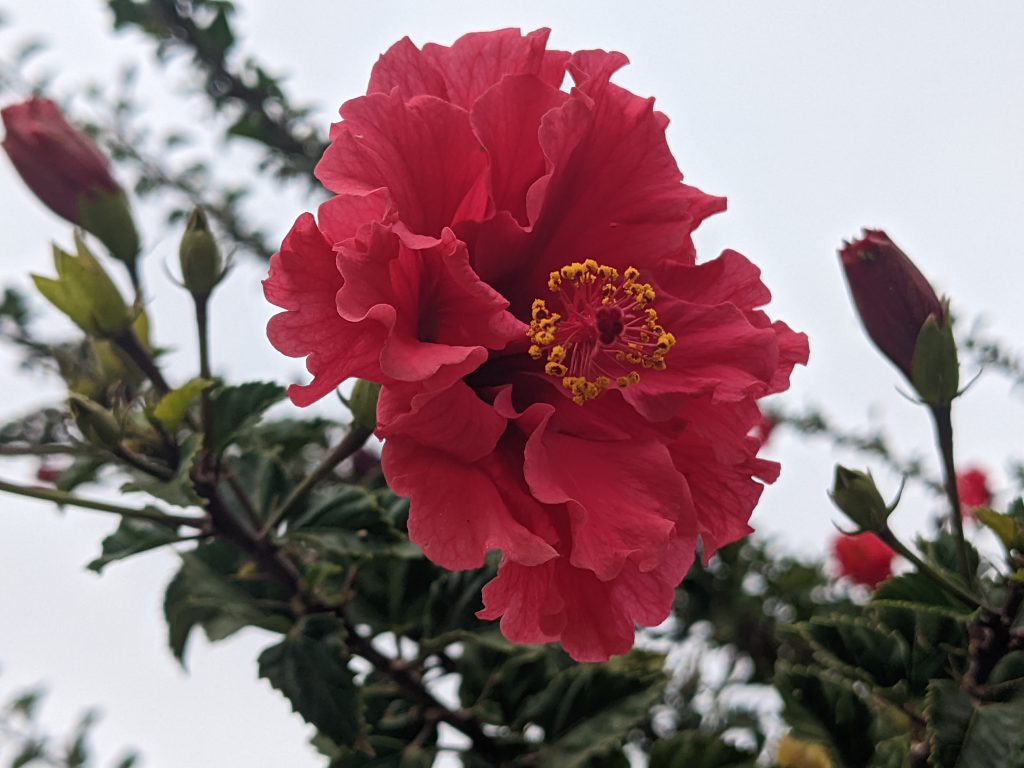
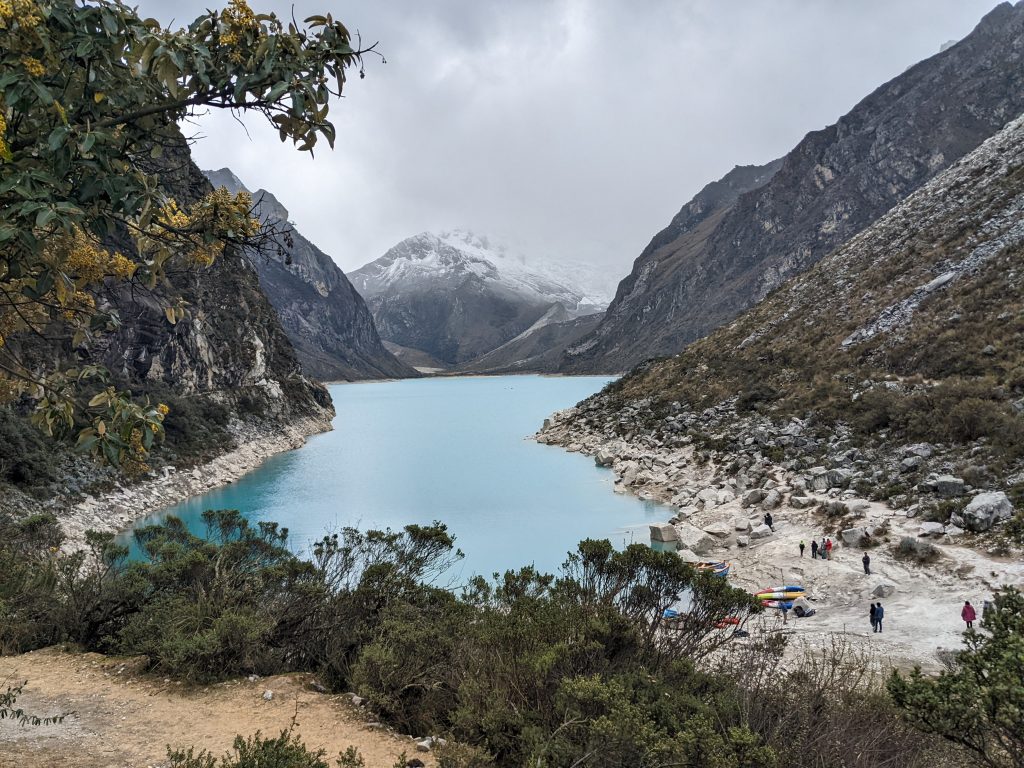
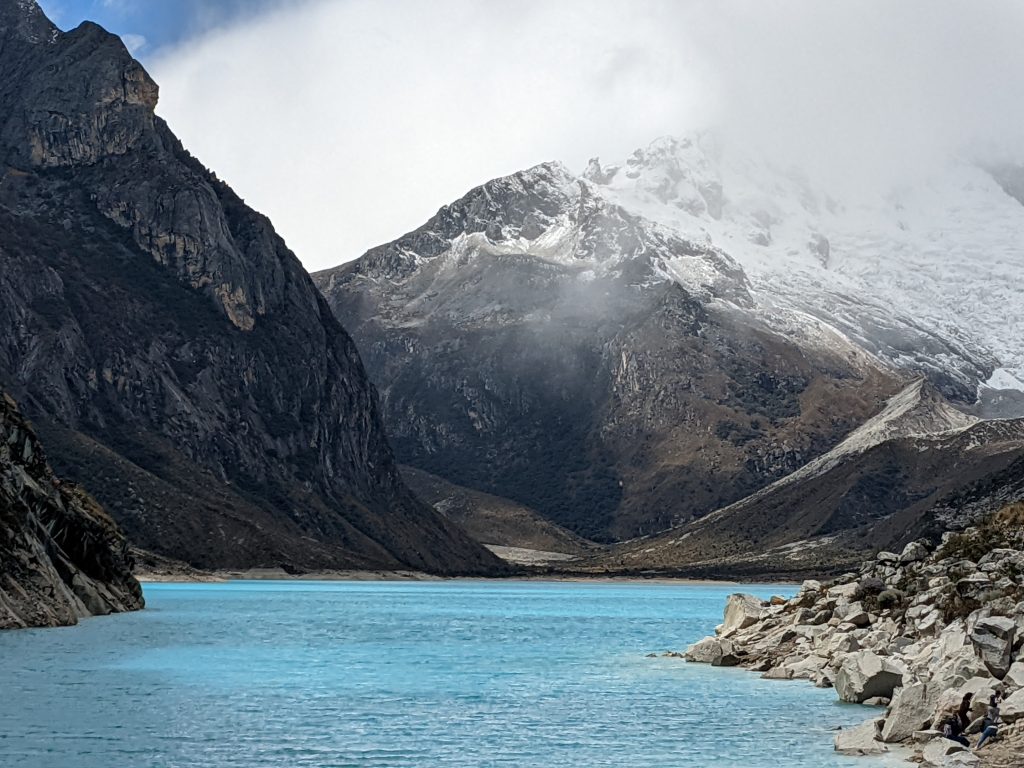
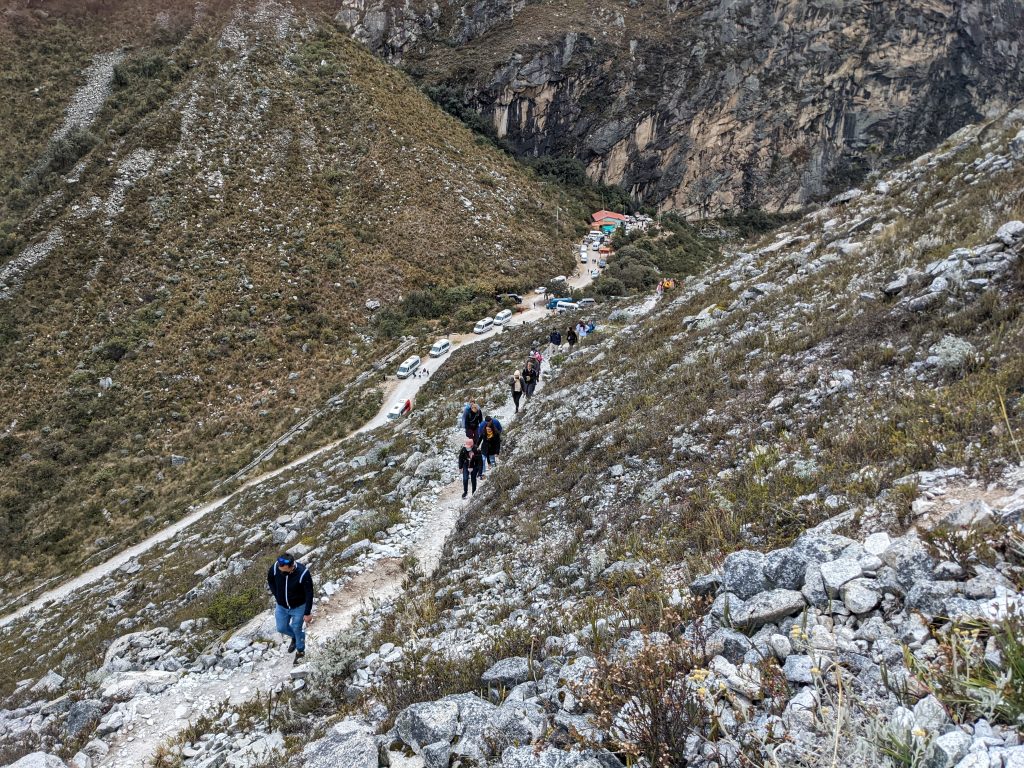
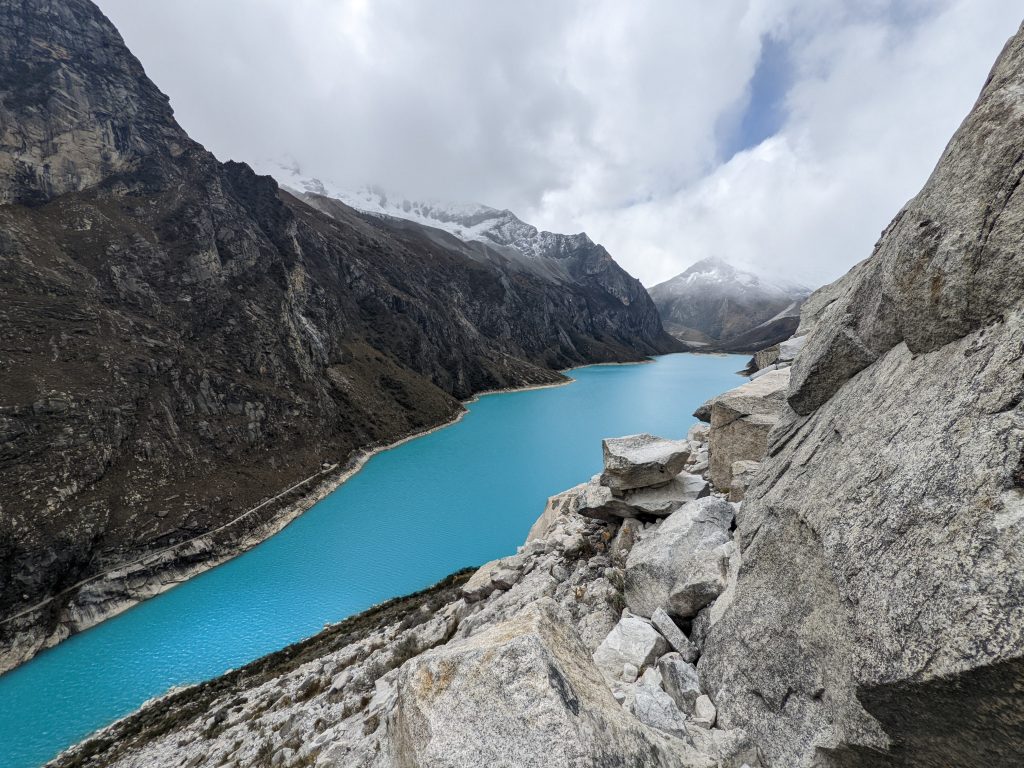
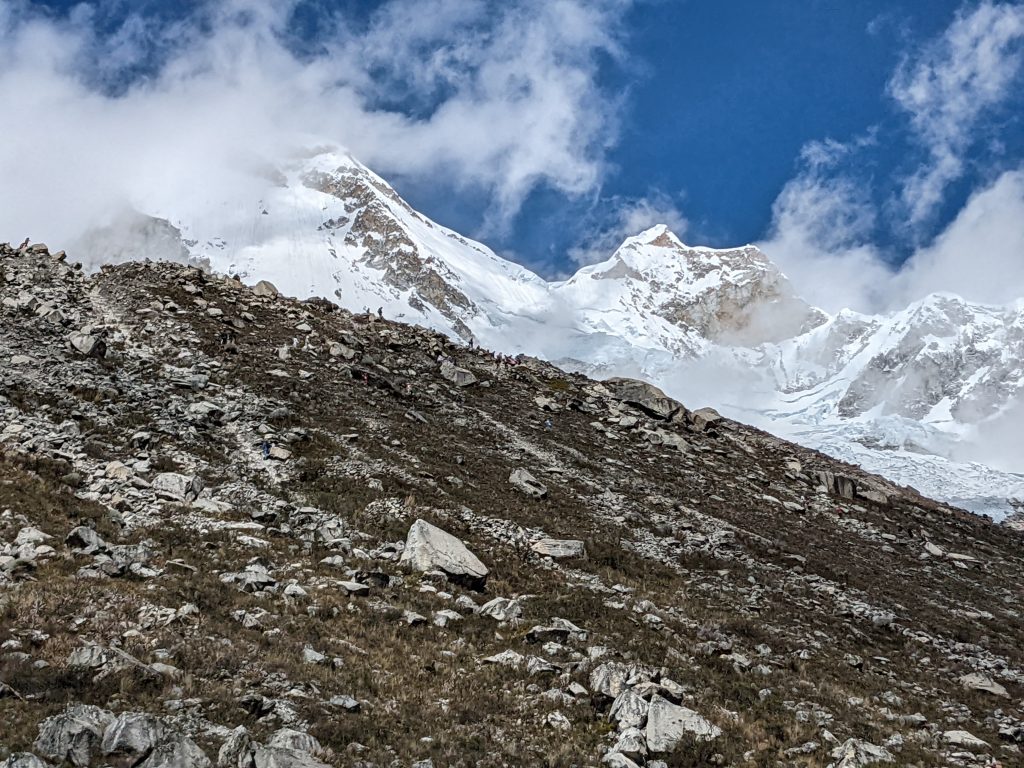
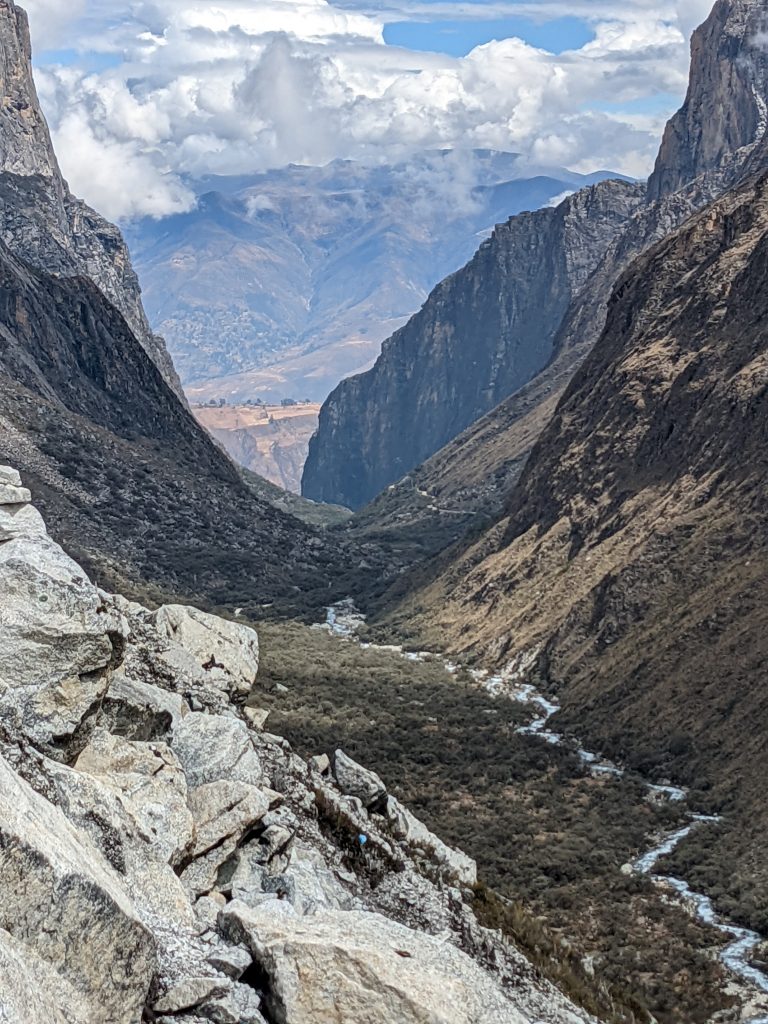
Pastoruri Glacier
Pastoruri Glacier one of the few glaciers left in the tropical areas of South America, and it’s shrinking quickly. It’s estimated that it could disappear completely in the next 20 years. The small lake surrounding it has grown 44 fold in the last 12 years as result of the glacier’s rapid melting. And it’s actually not even an official glacier anymore because it’s no longer building up ice in the winter.
It is also extremely high; it sits at 5,250 metres (17,200 feet) above sea level. As a comparison, the base camp at Mount Everest is at 5,364 meters (17,598 feet). Many of the Peruvians who had come up from Lima for the weekend were in serious pain on the short 1km walk from the parking lot to the lake. I think it might have been the highest altitude I’ve ever been to this point.
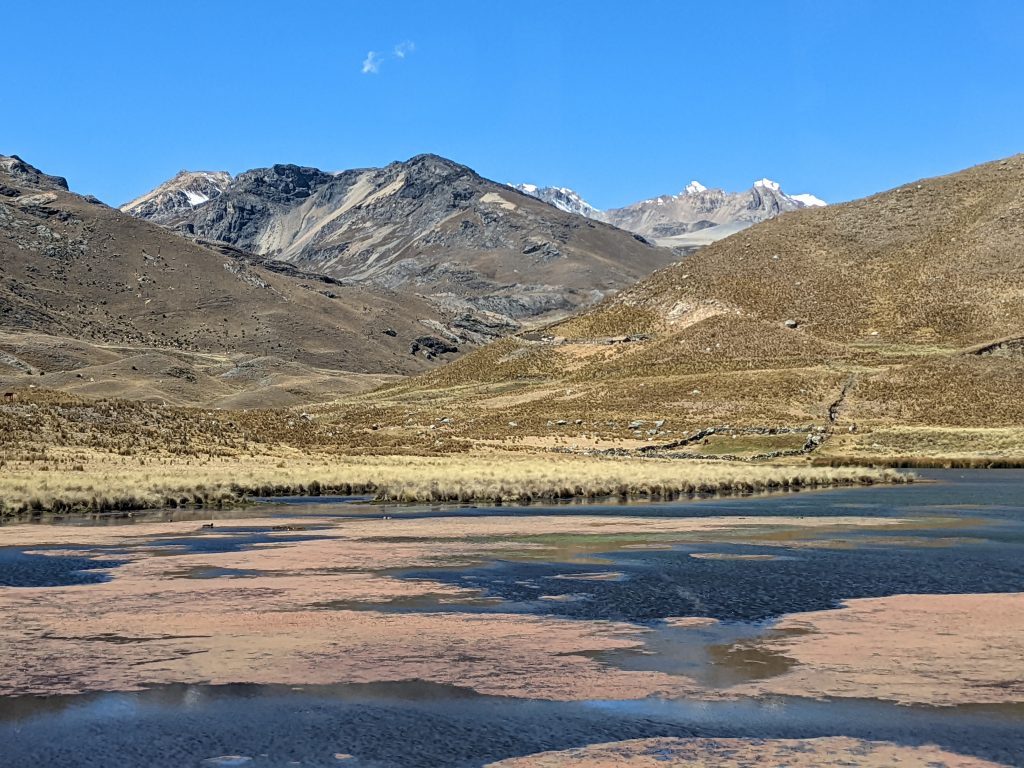
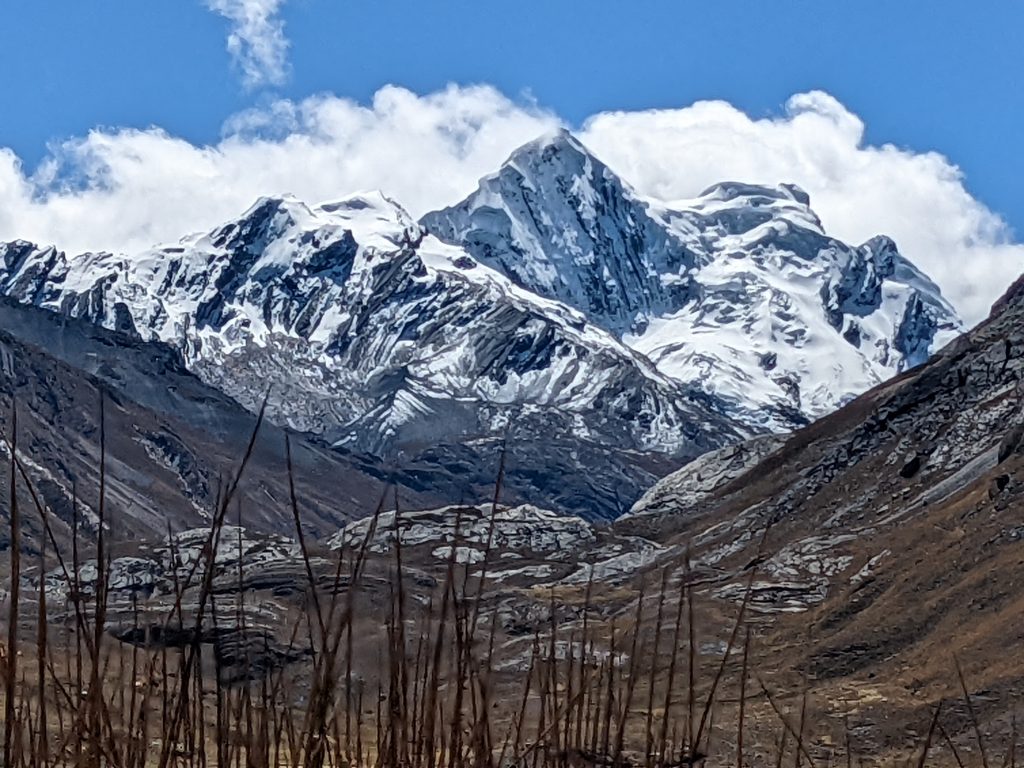
We stopped to look at some puya raimondii plants. They have a fascinating life cycle. For their first 40 years they has a round cactus appearence. Then between 40 and 100 years they grow a large stalk, which will eventually produce between 8,000 and 20,000 flowers in a 3-month period, and disperse over a million seeds. Once that’s accomplished they then die.
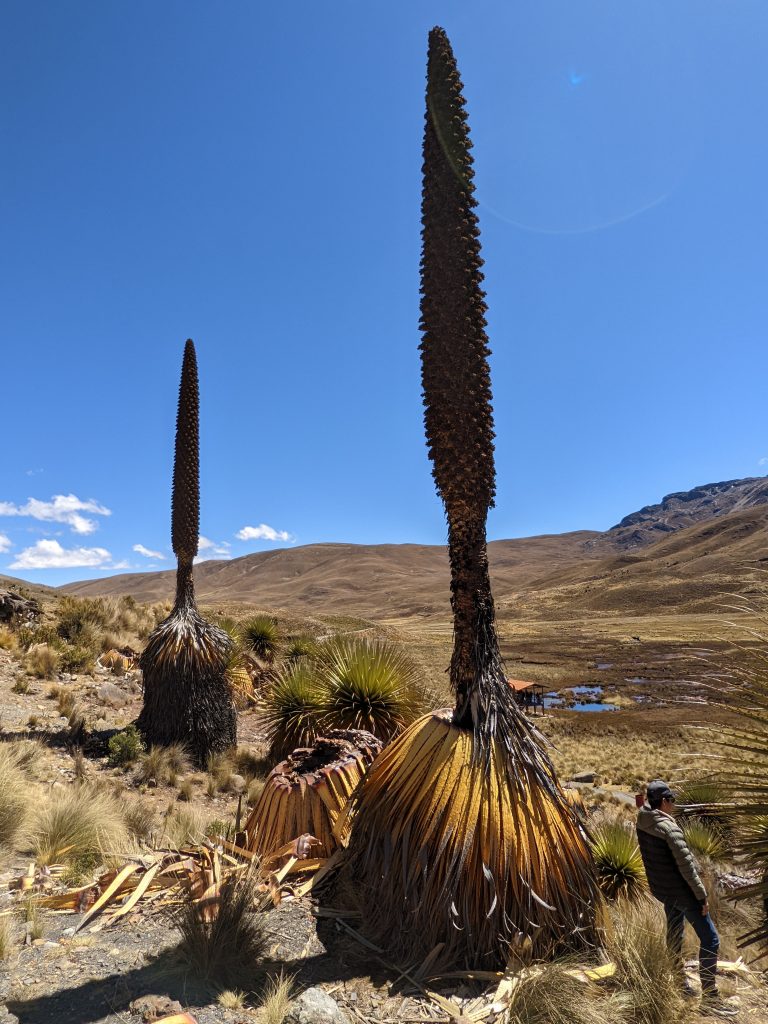
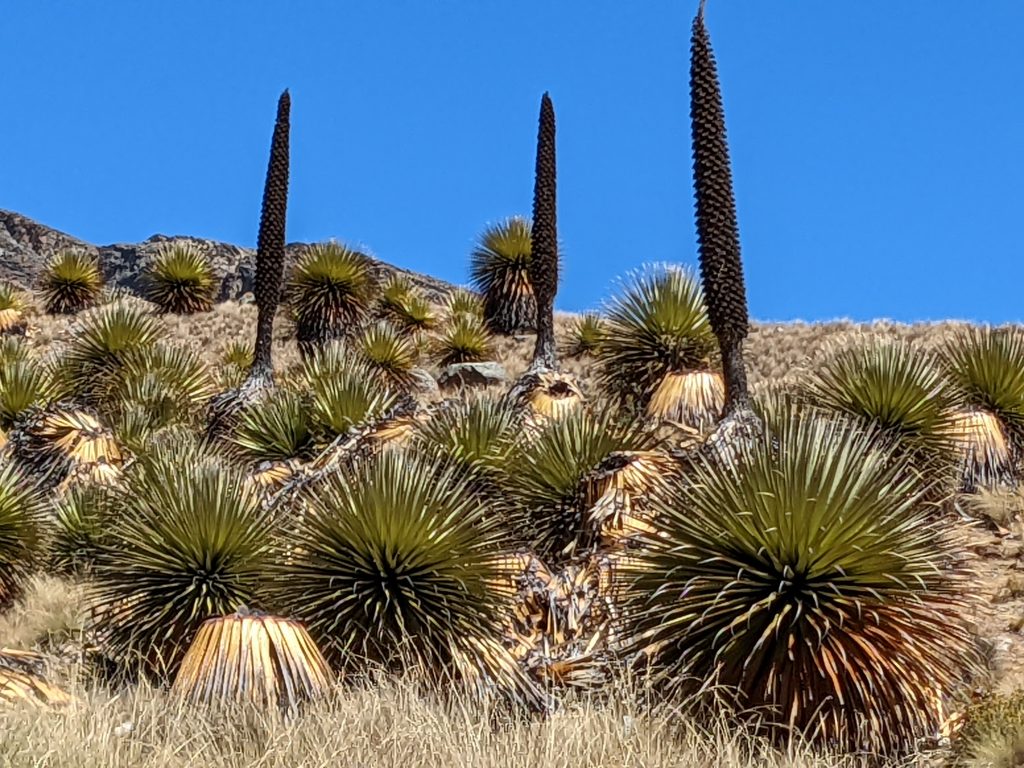
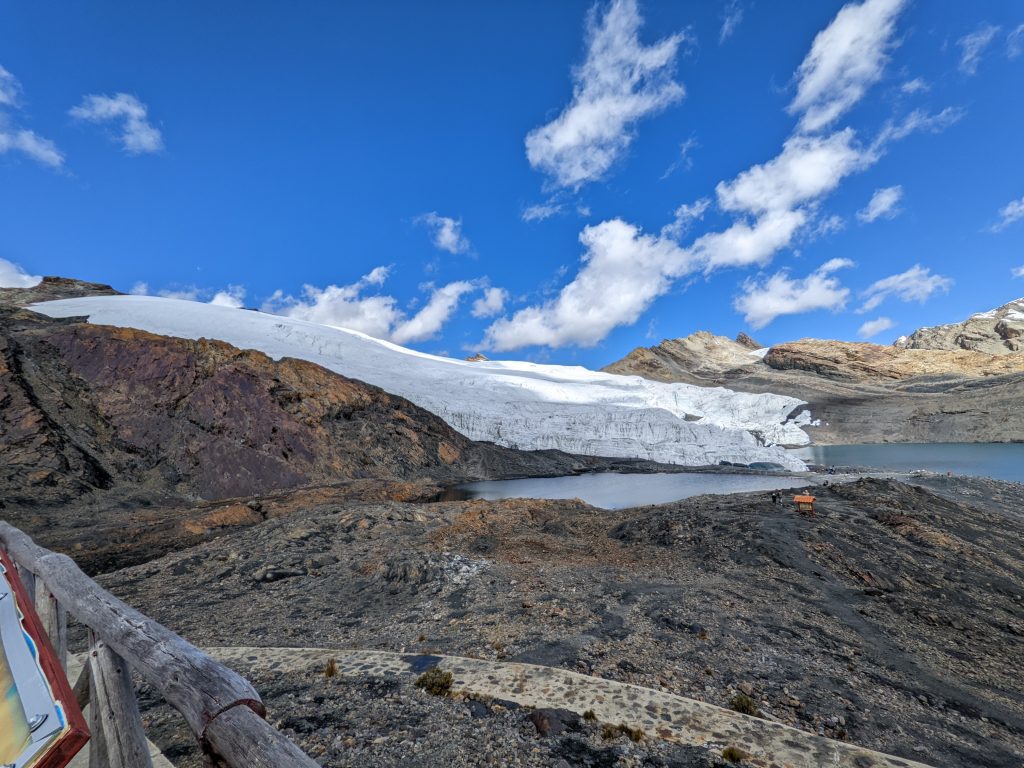
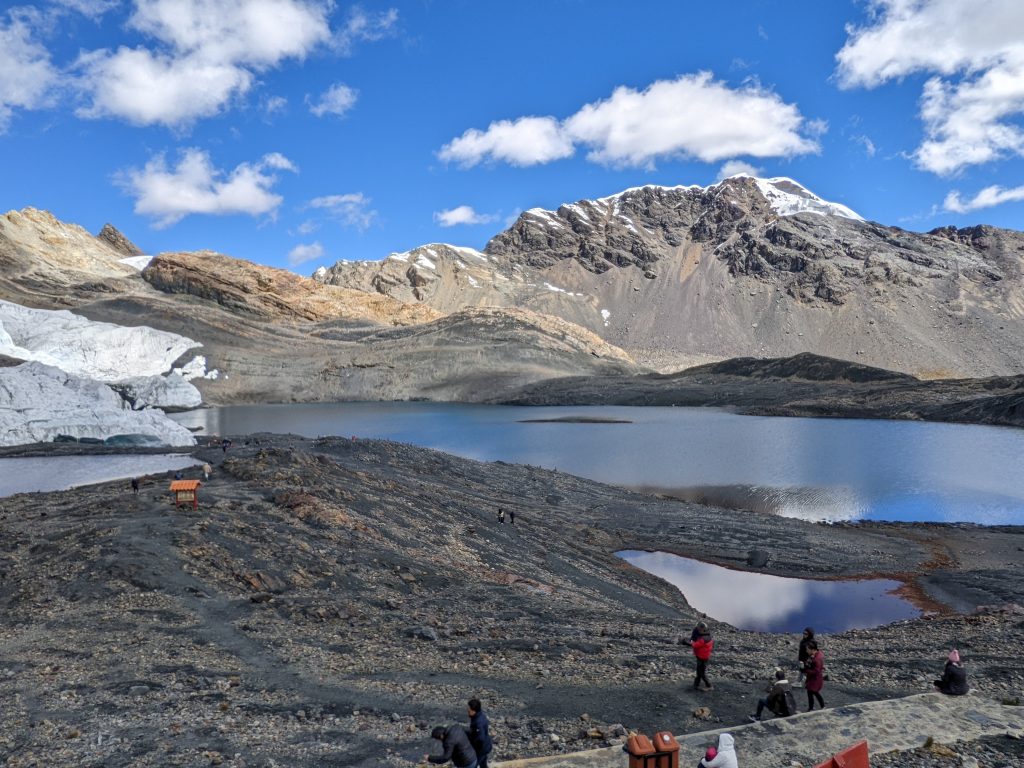
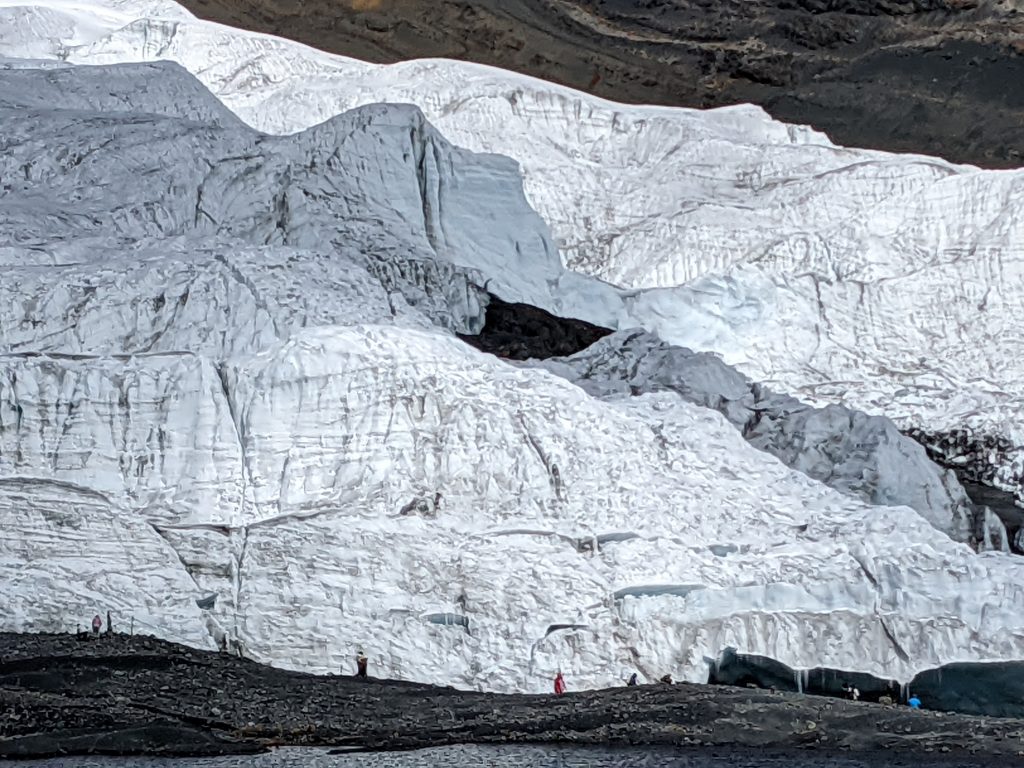
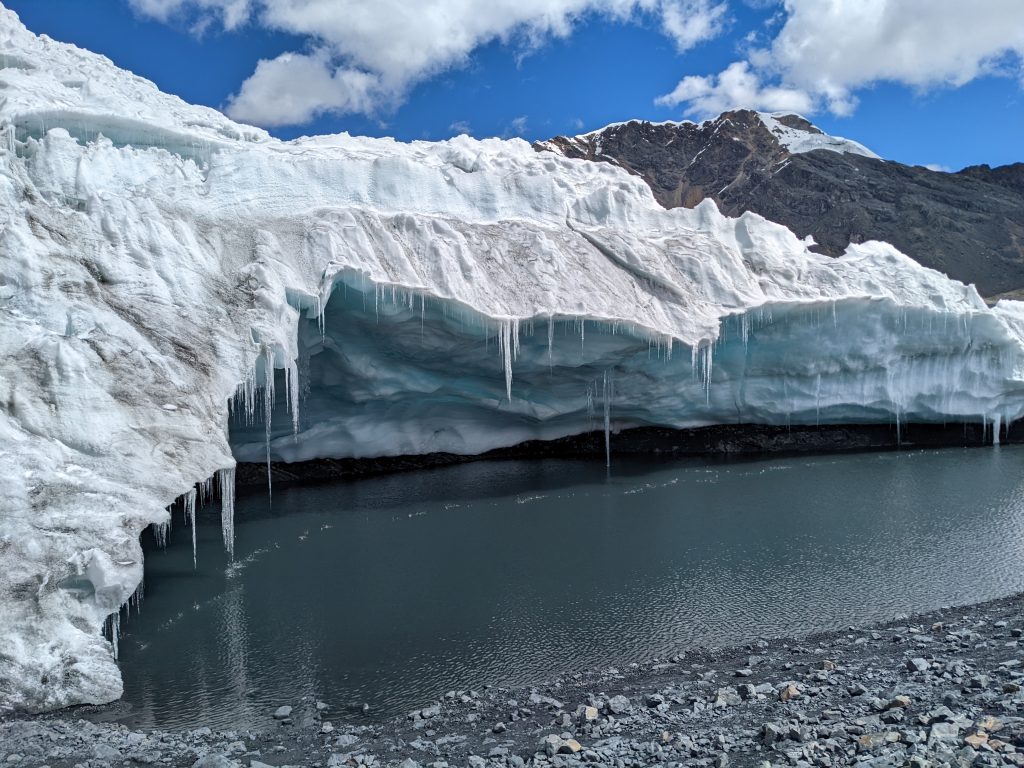
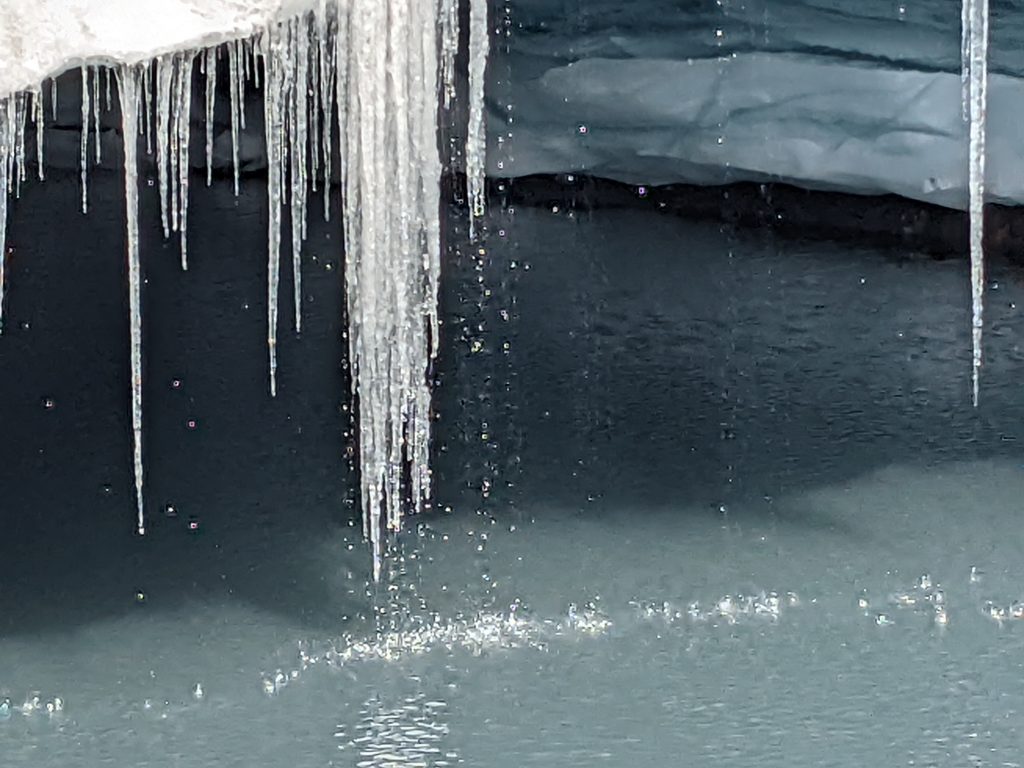
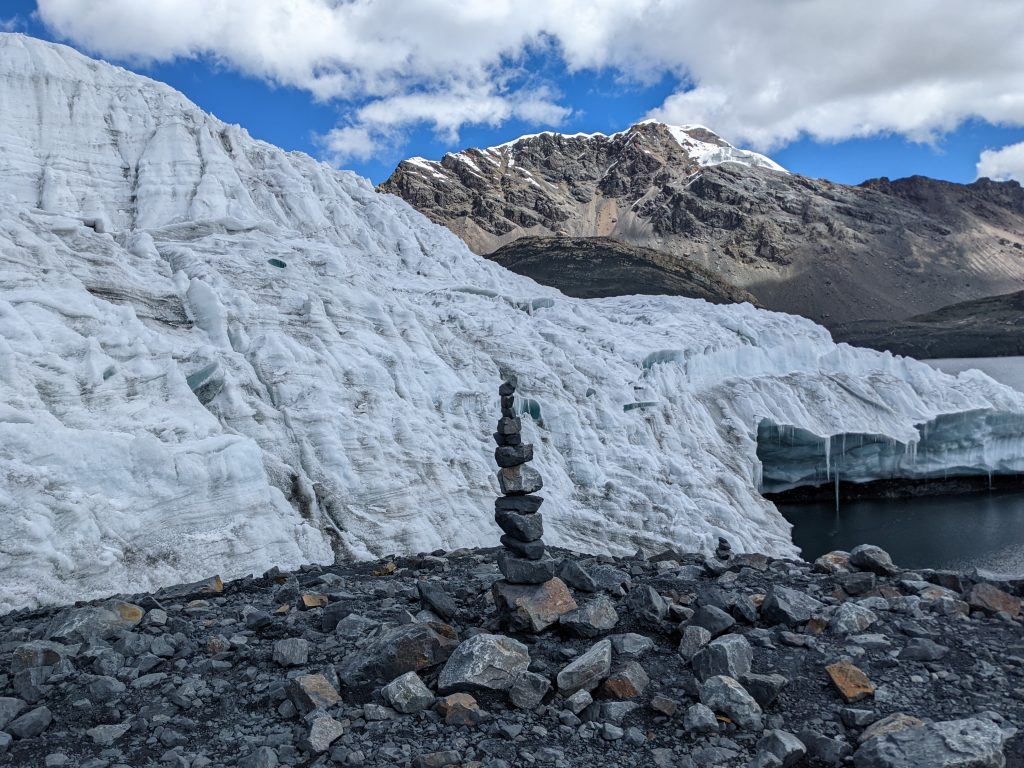
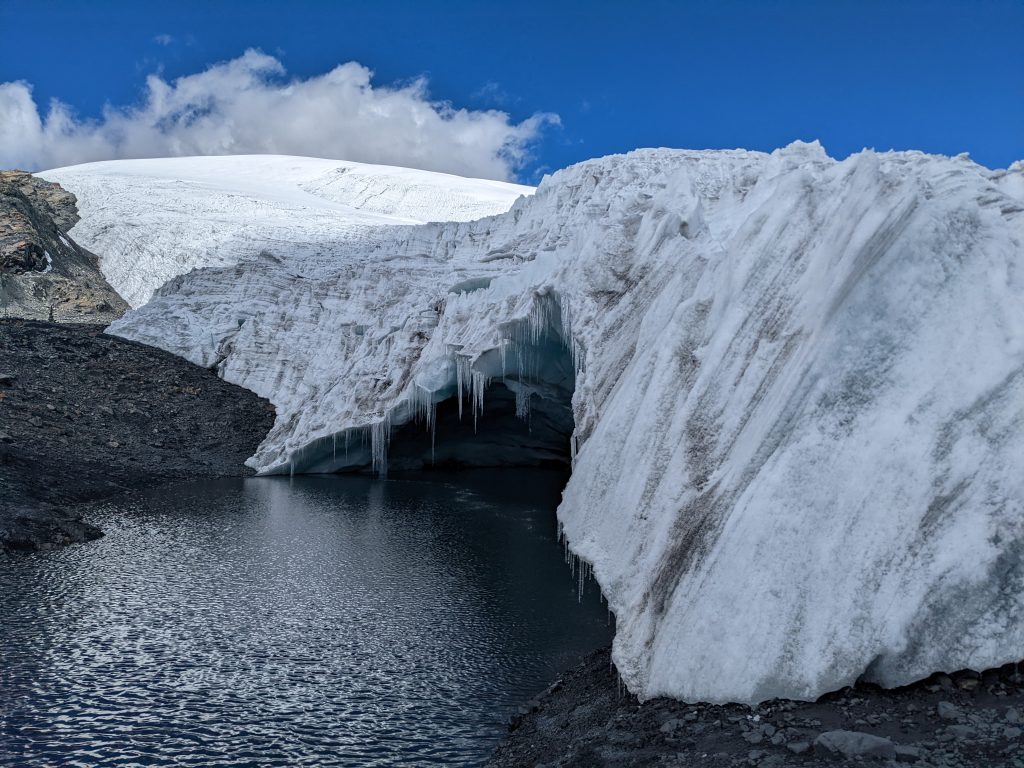
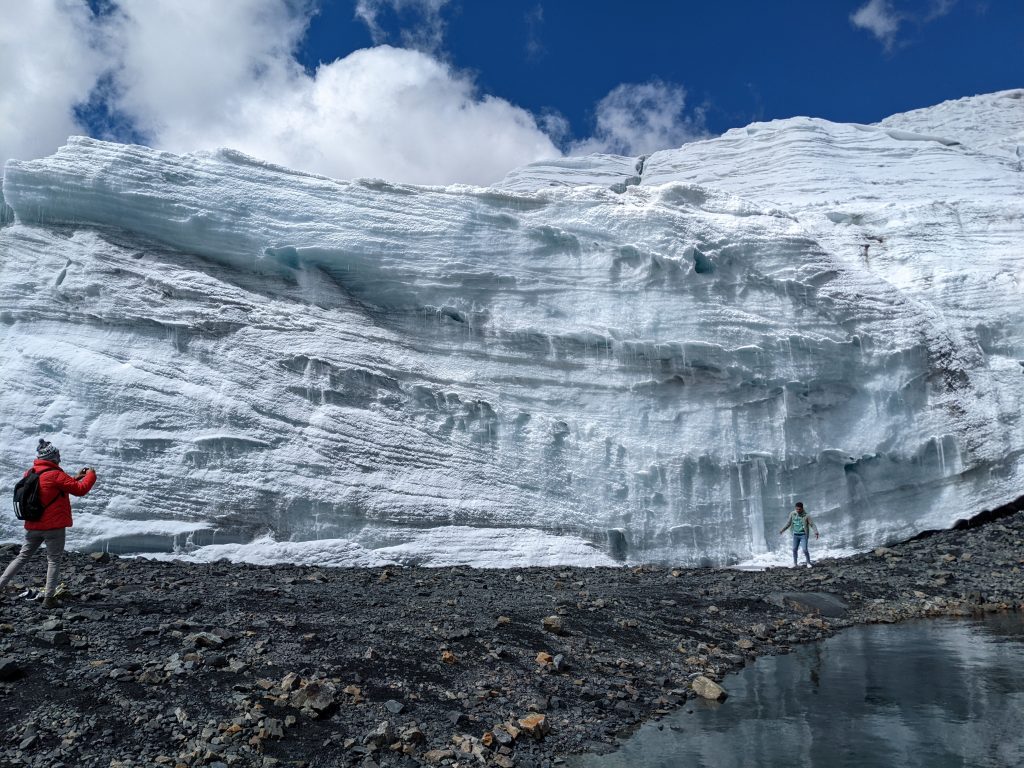
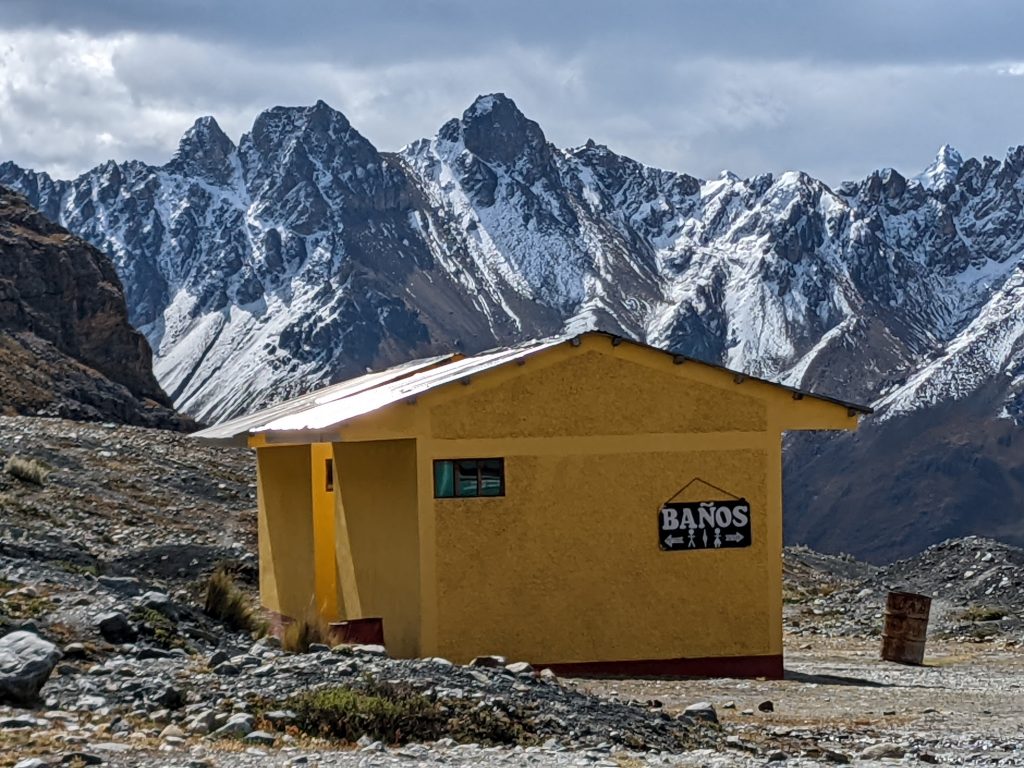
Some of the spectacular surrounding Andean mountains.
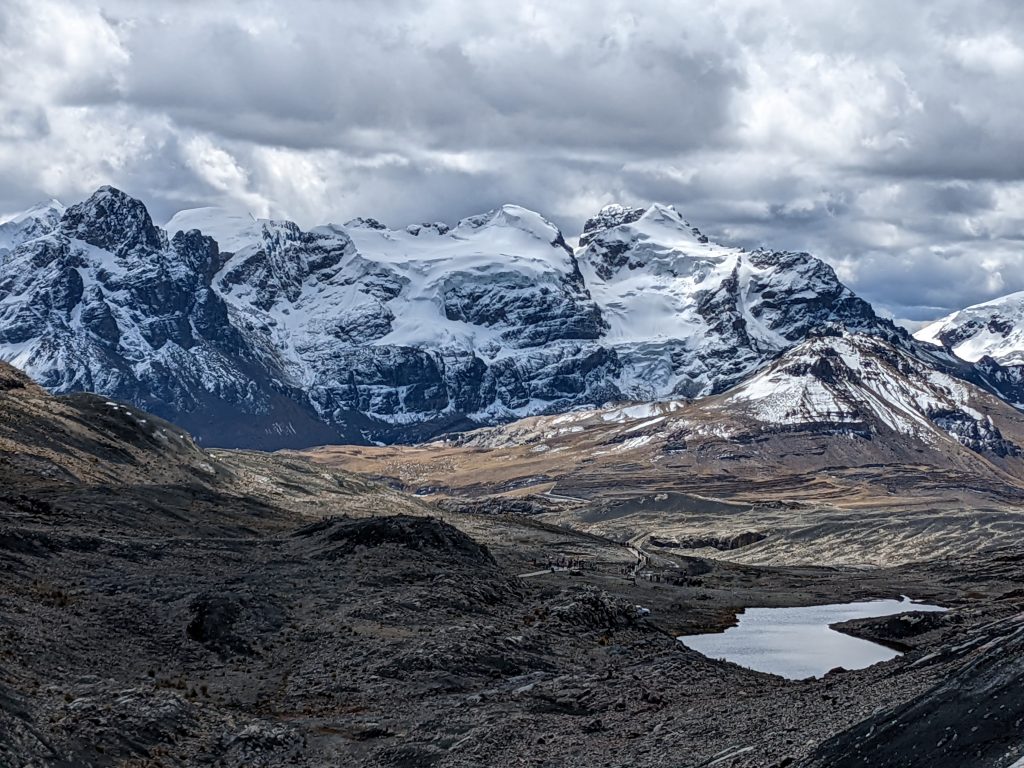
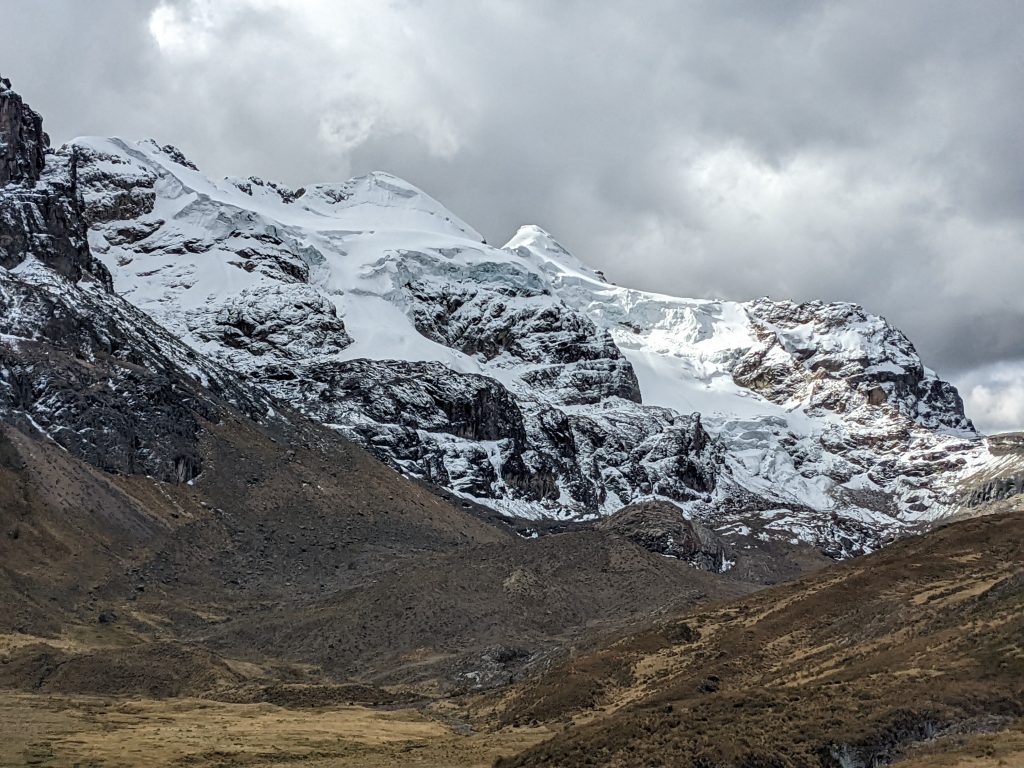
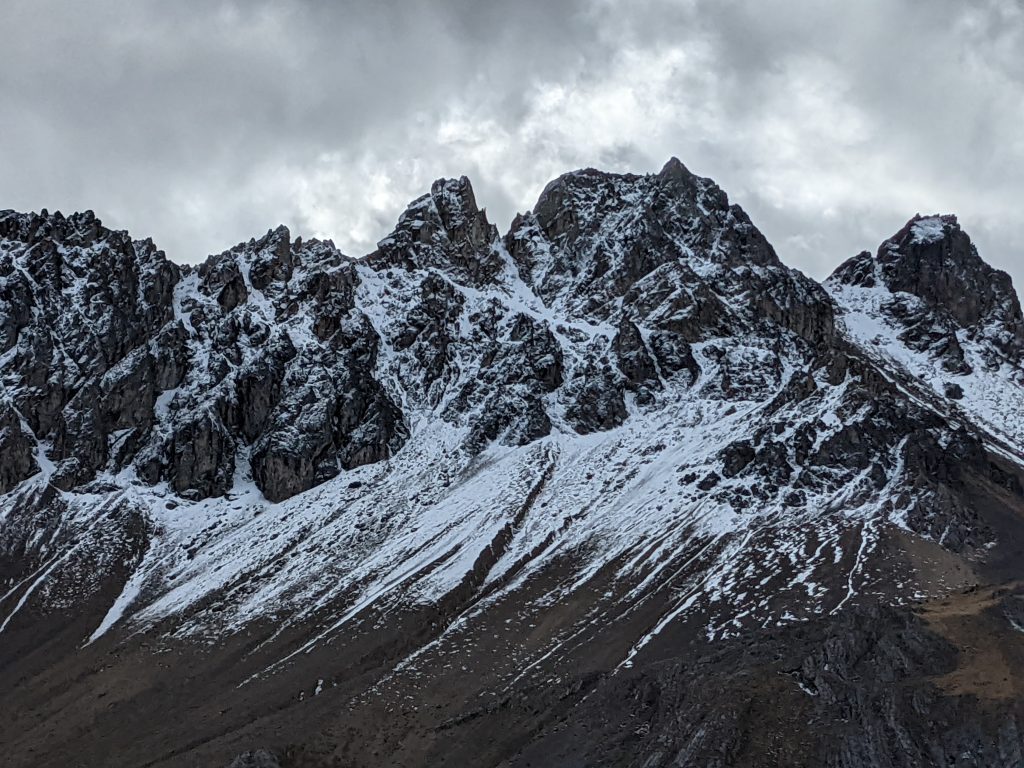
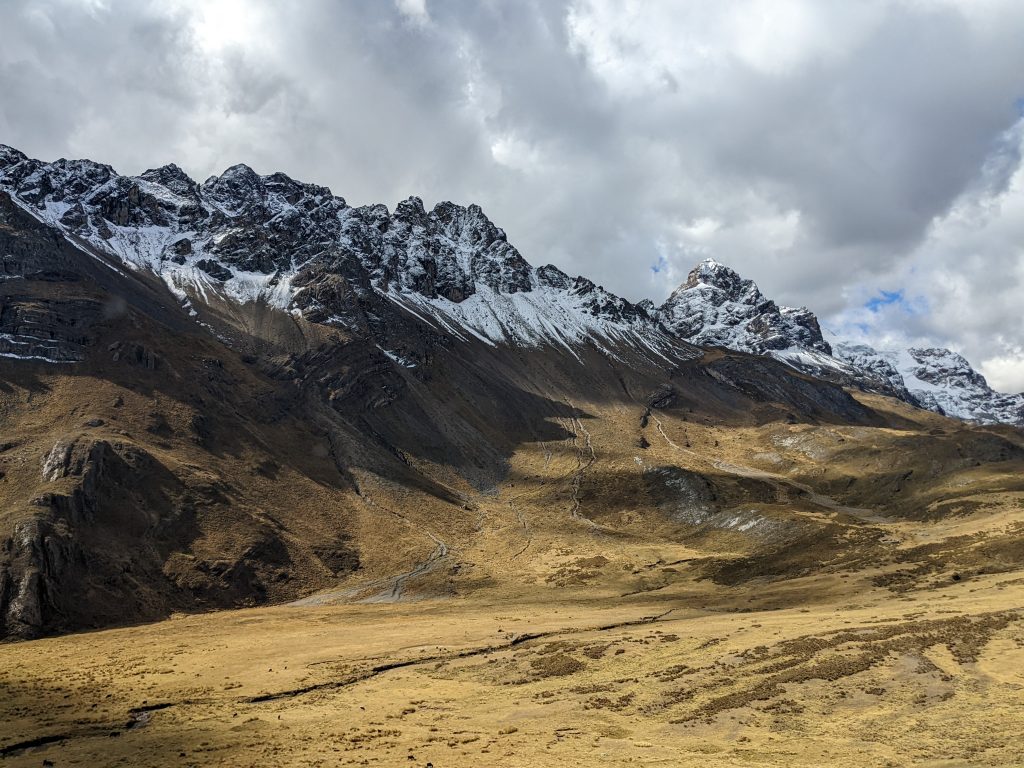
Laguna 69
Laguna 69 is a small lake whose name came from the fact that the lake was unnamed before the Huascaran National Park was created in 1975. The need to include all of the lakes of the proposed park into a list forced authorities to give number-based names to those without a traditional name. There’s no other hidden meaning to the lake’s name 🙂
The lake itself is pretty, but not as spectacular as other lakes in the area. What is beautiful is the 7km hike to get to the lake. It’s an incredibly scenic and relatively strenous hike as you gain 800 meters (2,600 feet) in altitude to where the lake sits at 4,604 meters (15,100 feet) above sea level.
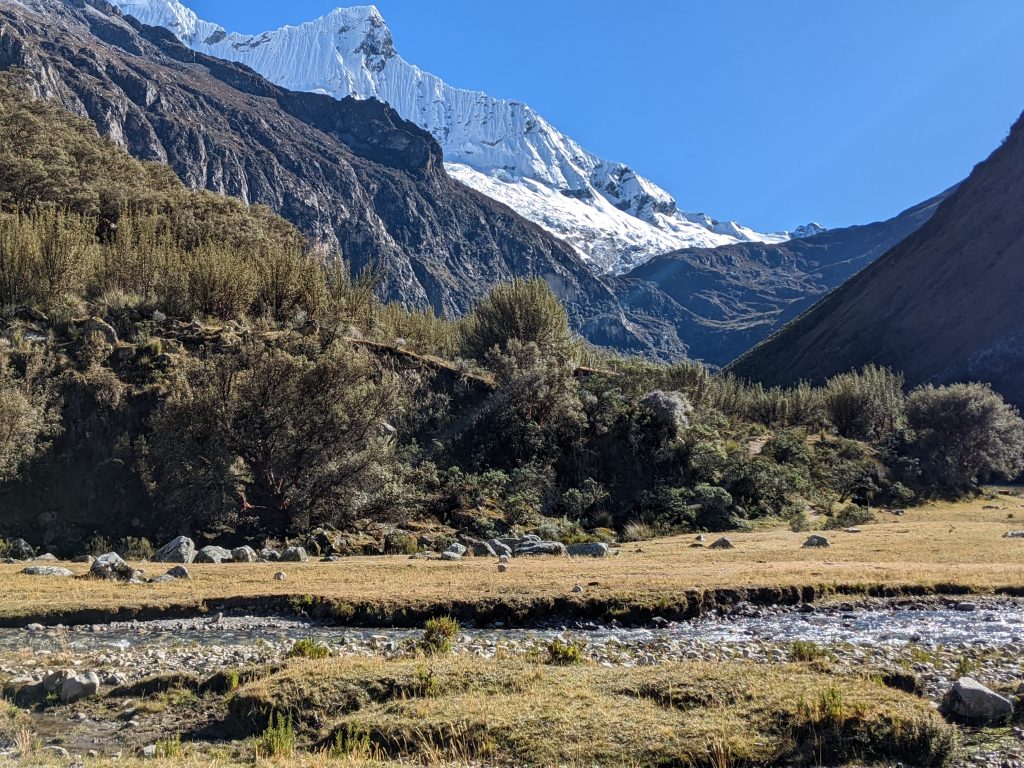
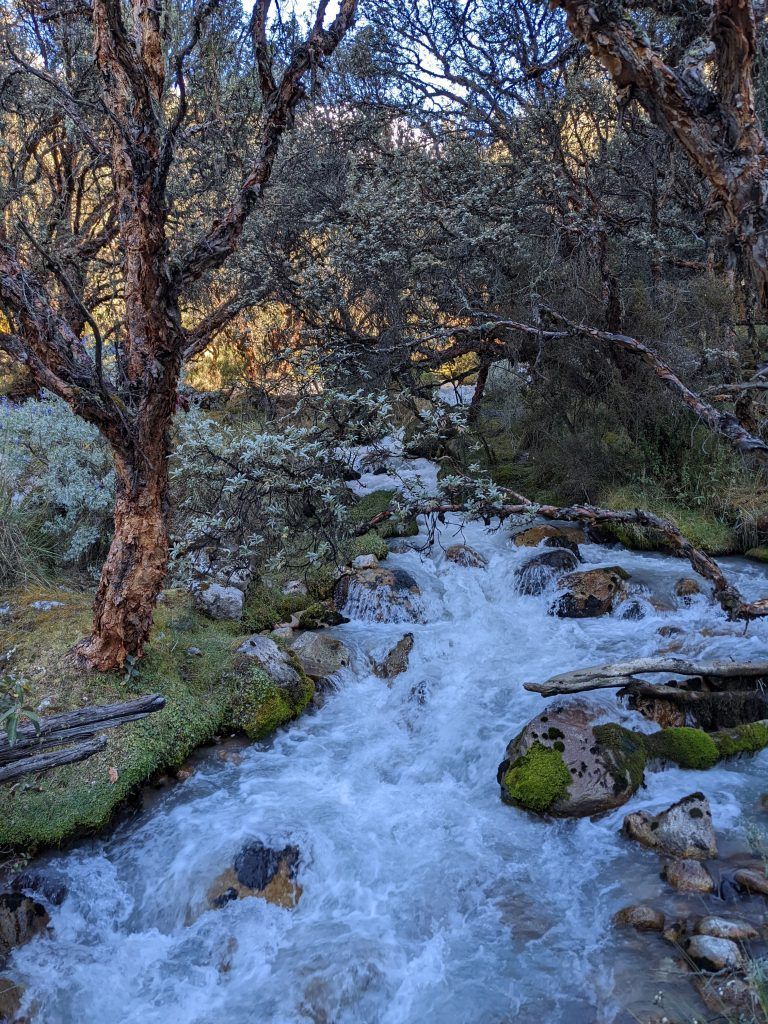
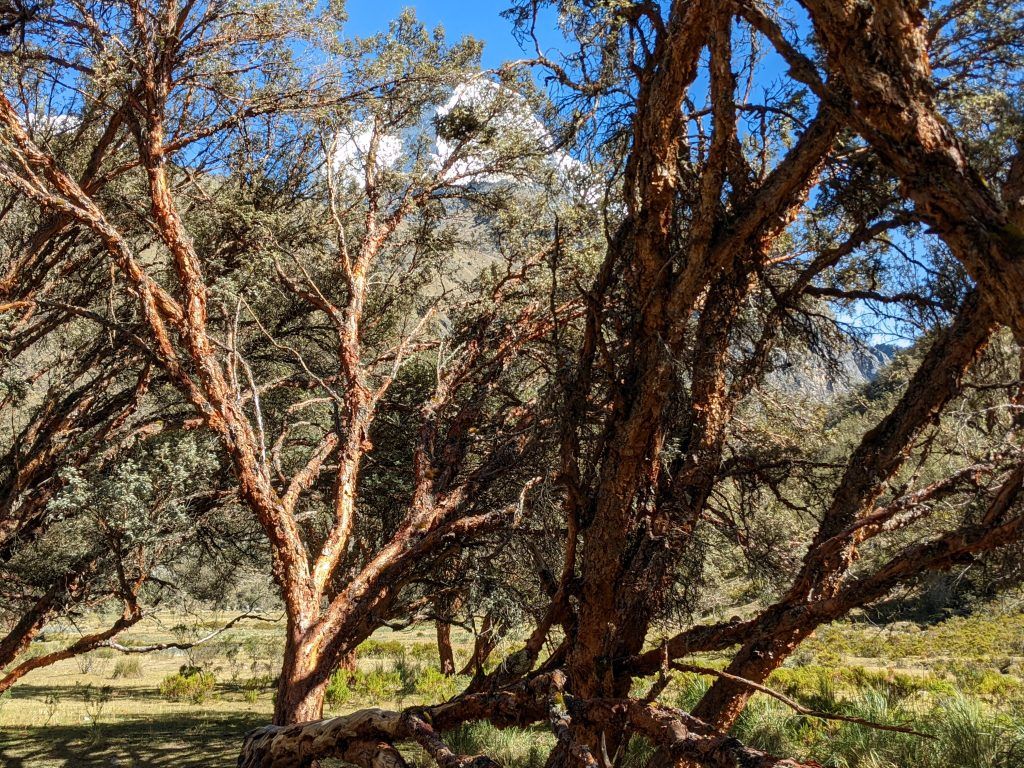
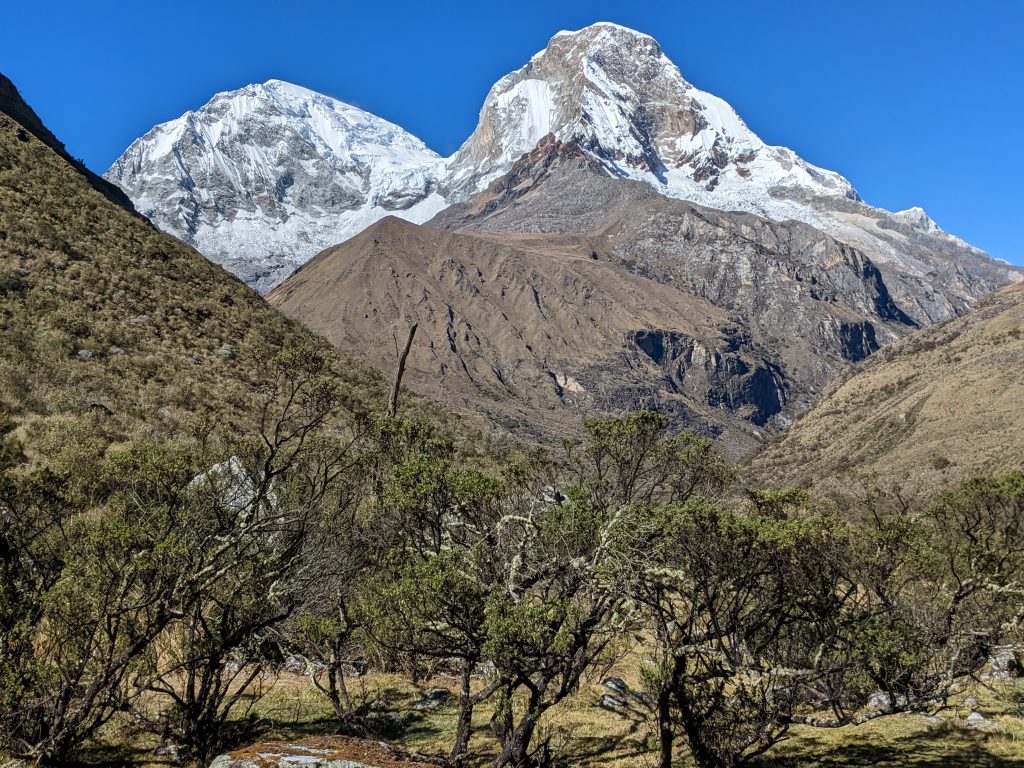
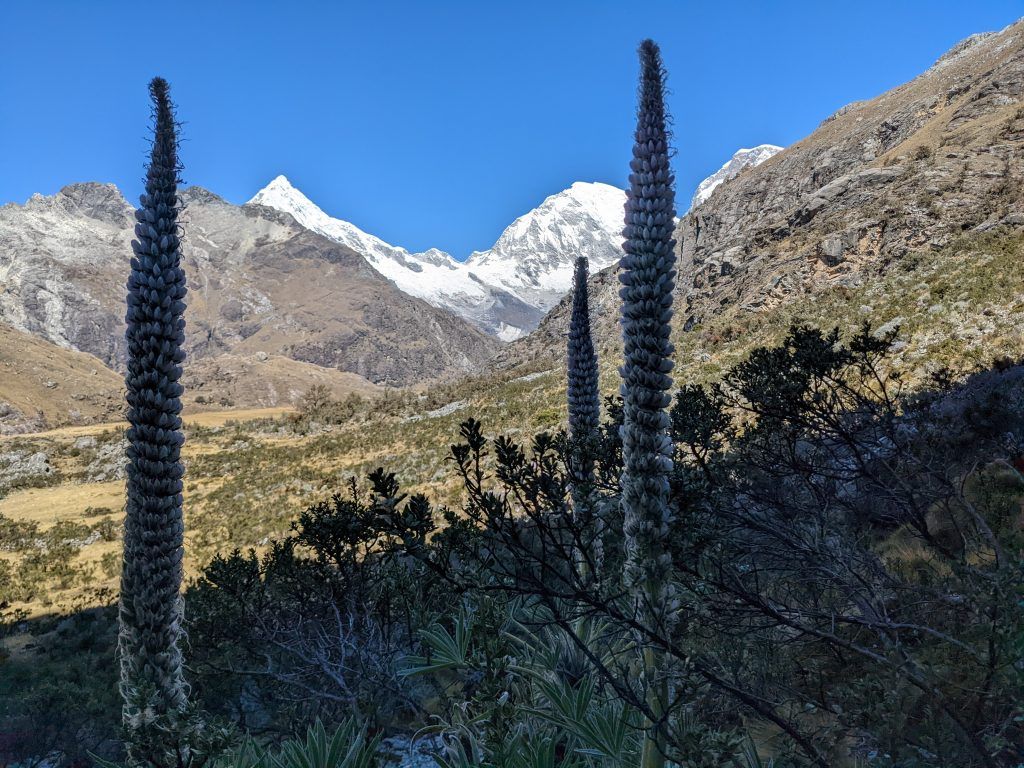
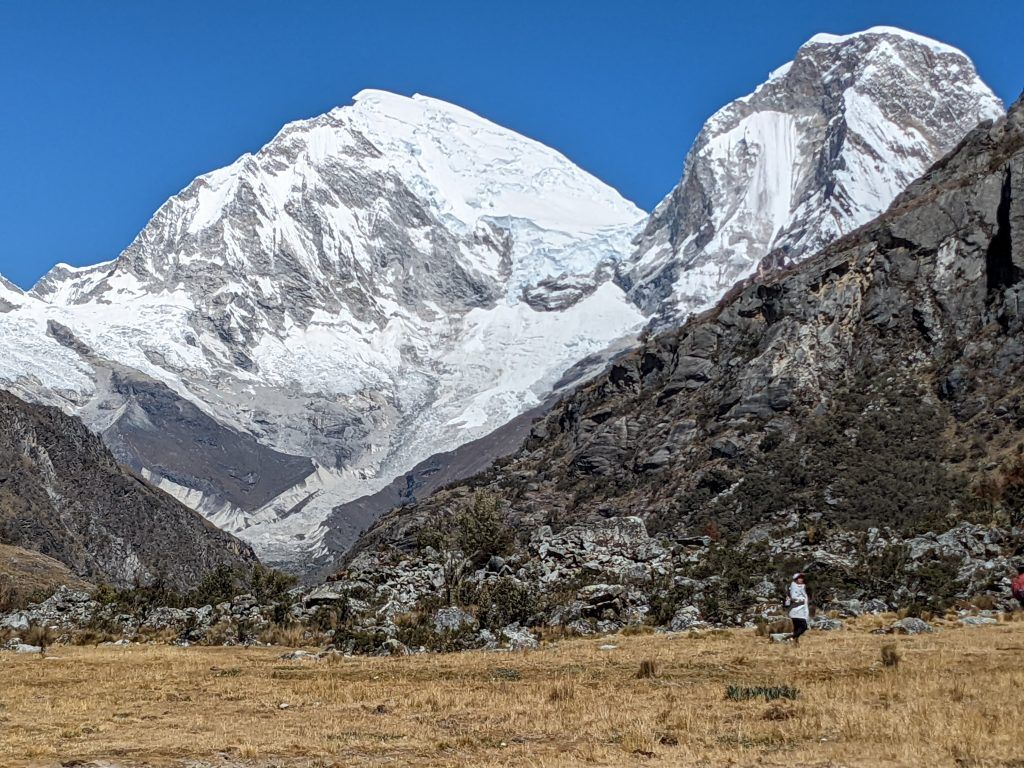
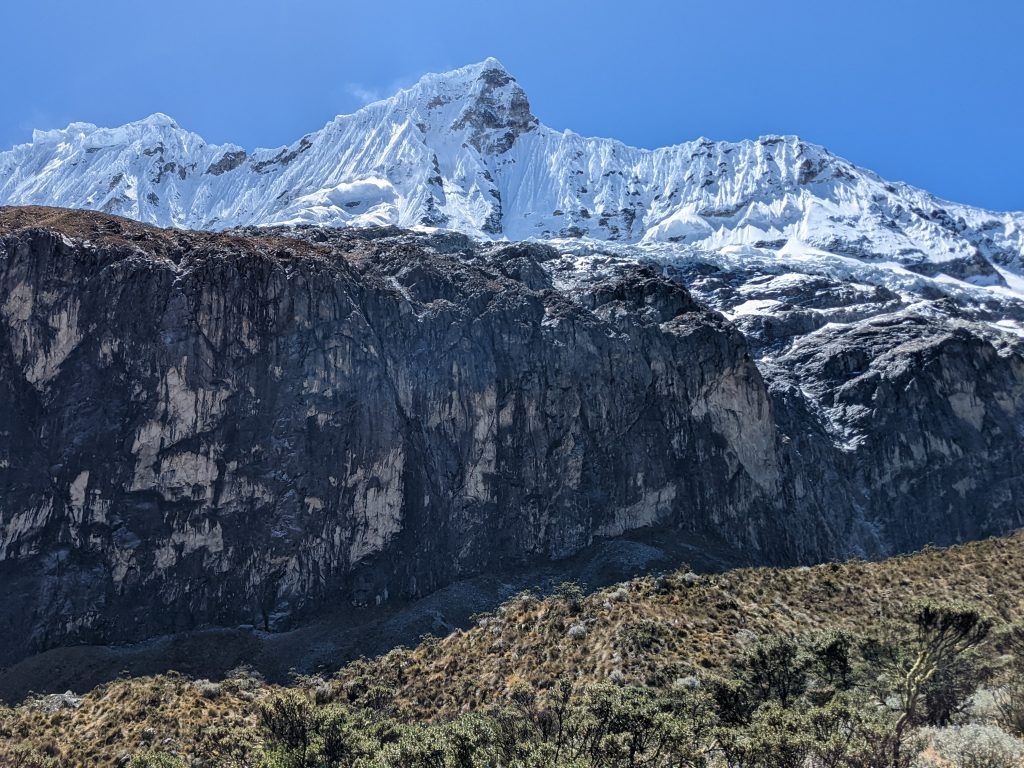
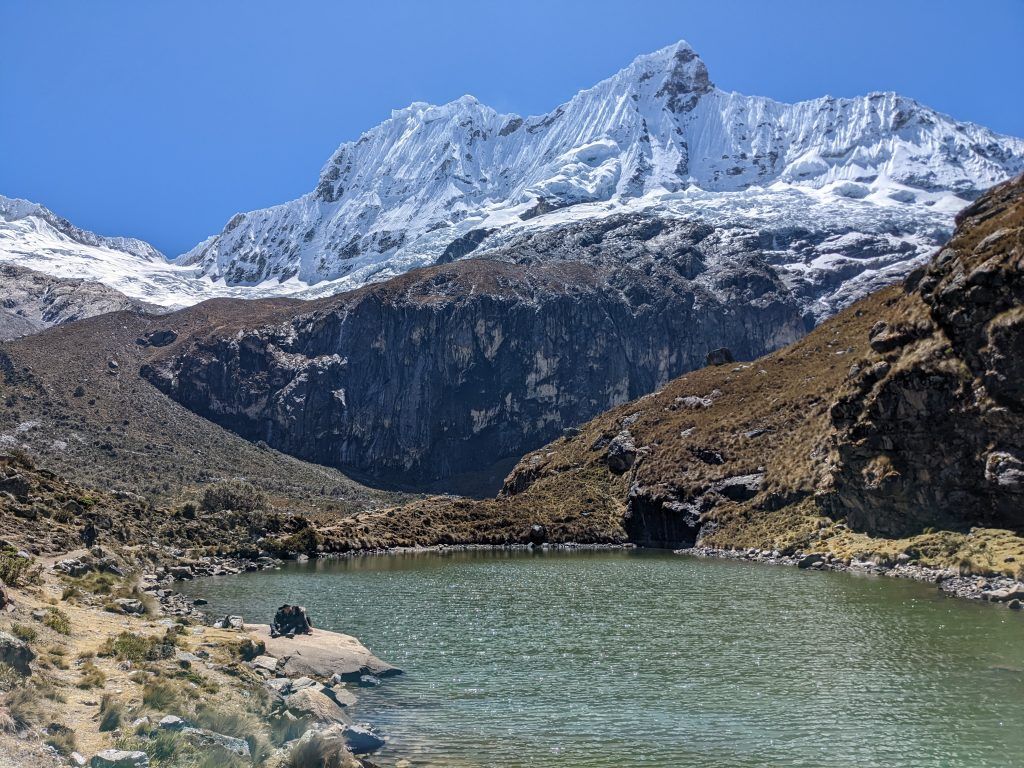
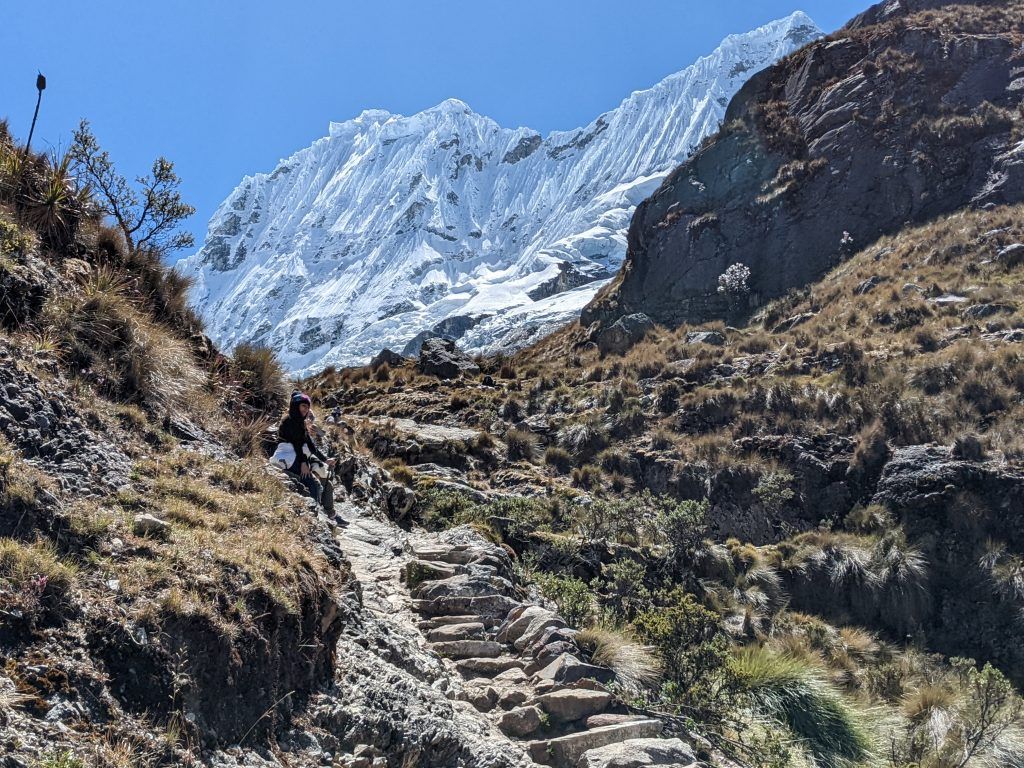
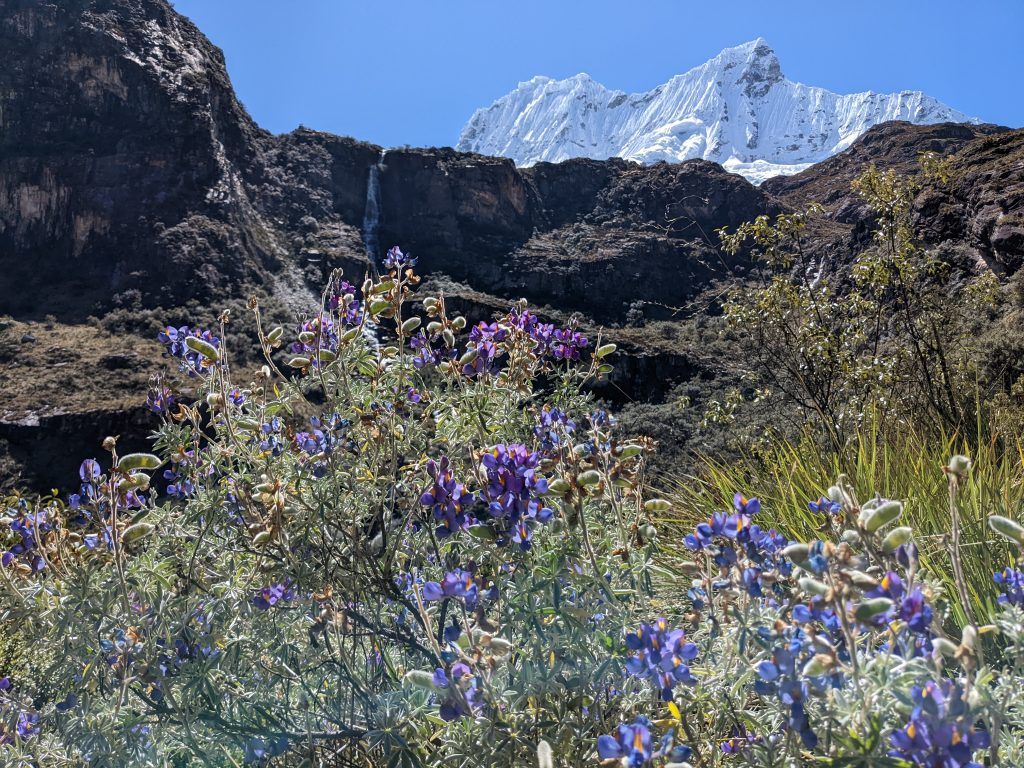
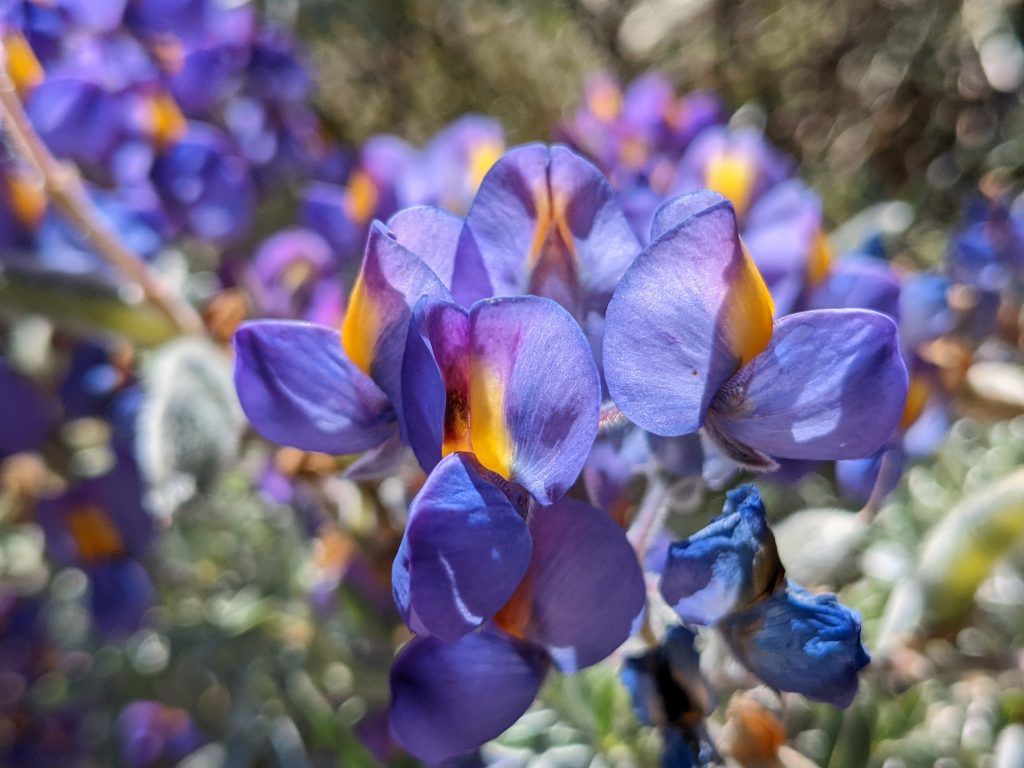
The first glimpse of the lake behind the official sign.
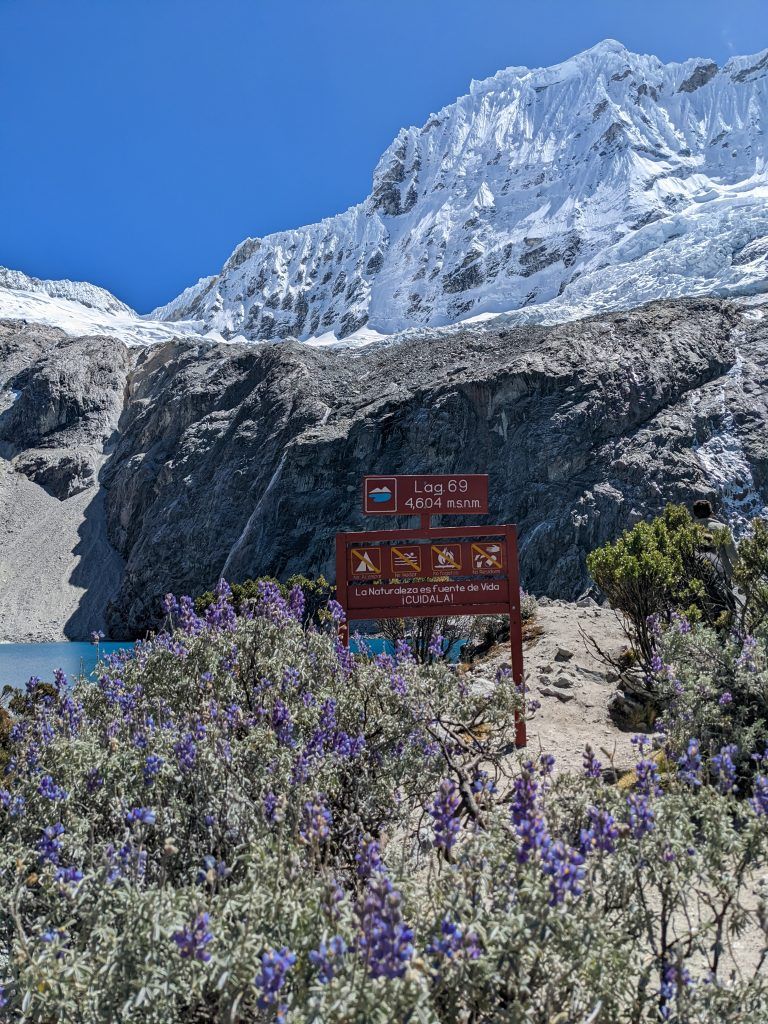
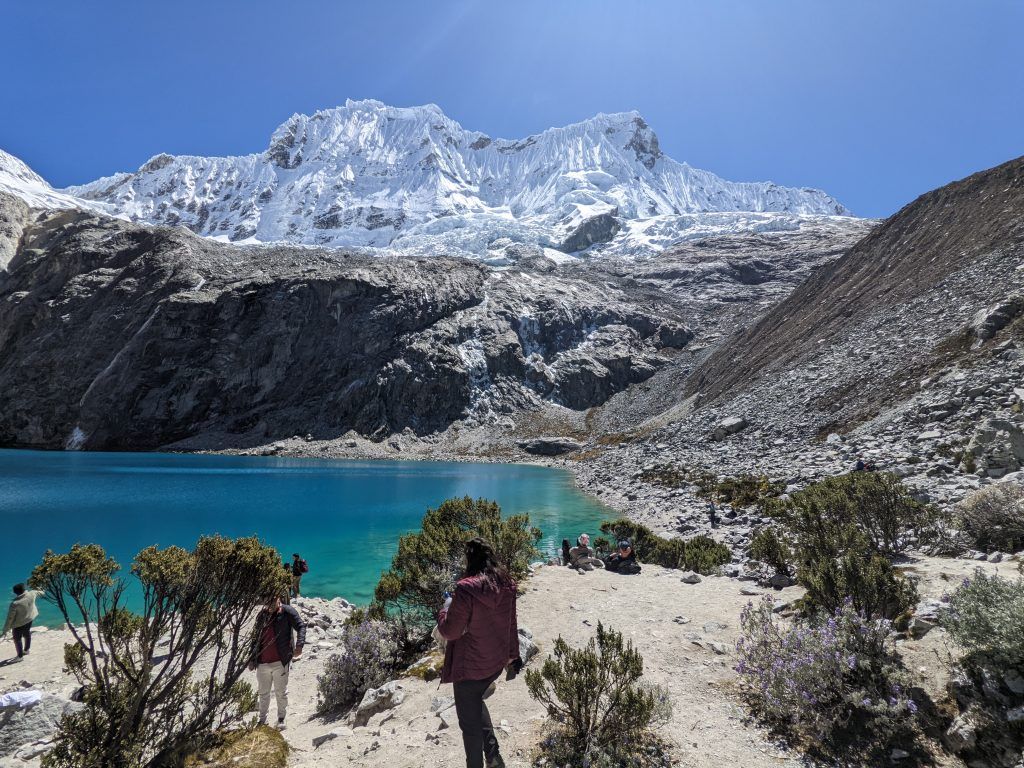
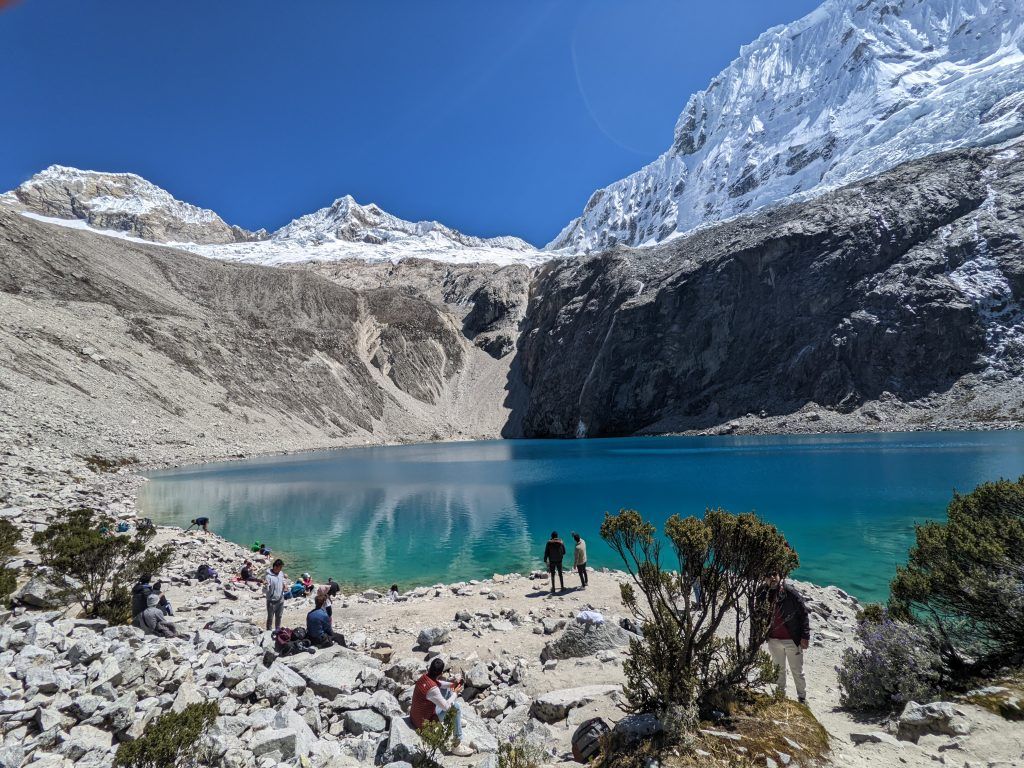
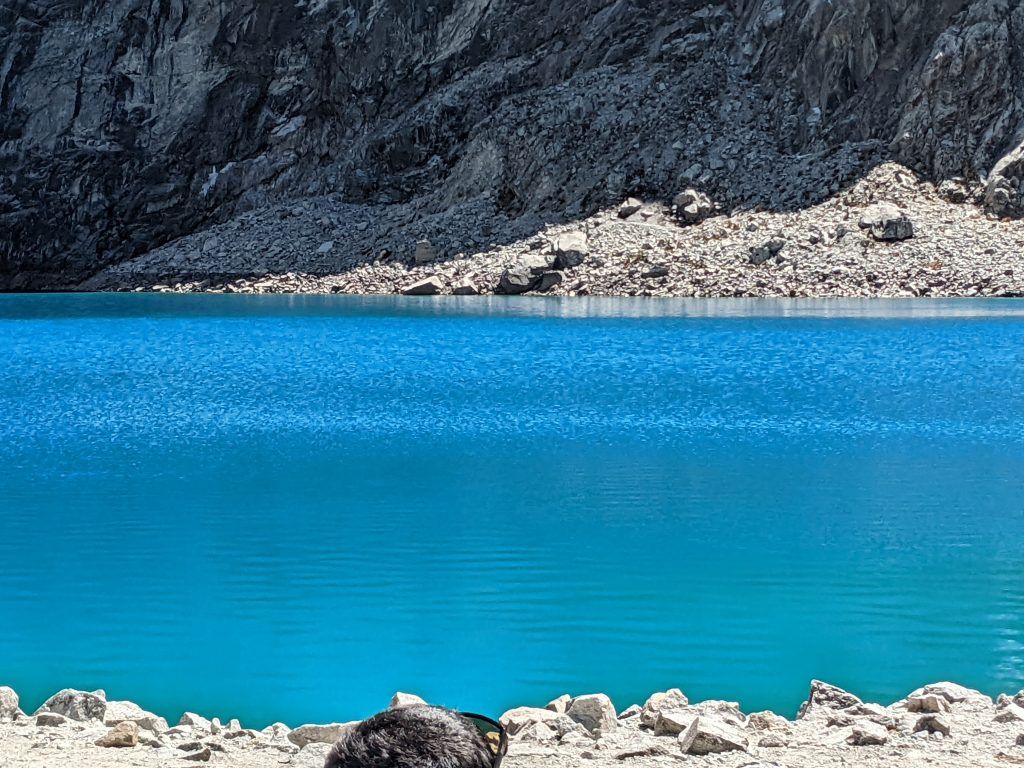
And the coolest part of the hike was that two good friends, Megan and Garrett, from my time living in Playa del Carmen, were also traveling through Peru. By complete coincidence we were both in Huaraz at the same time and got to experience the hike and lake together.
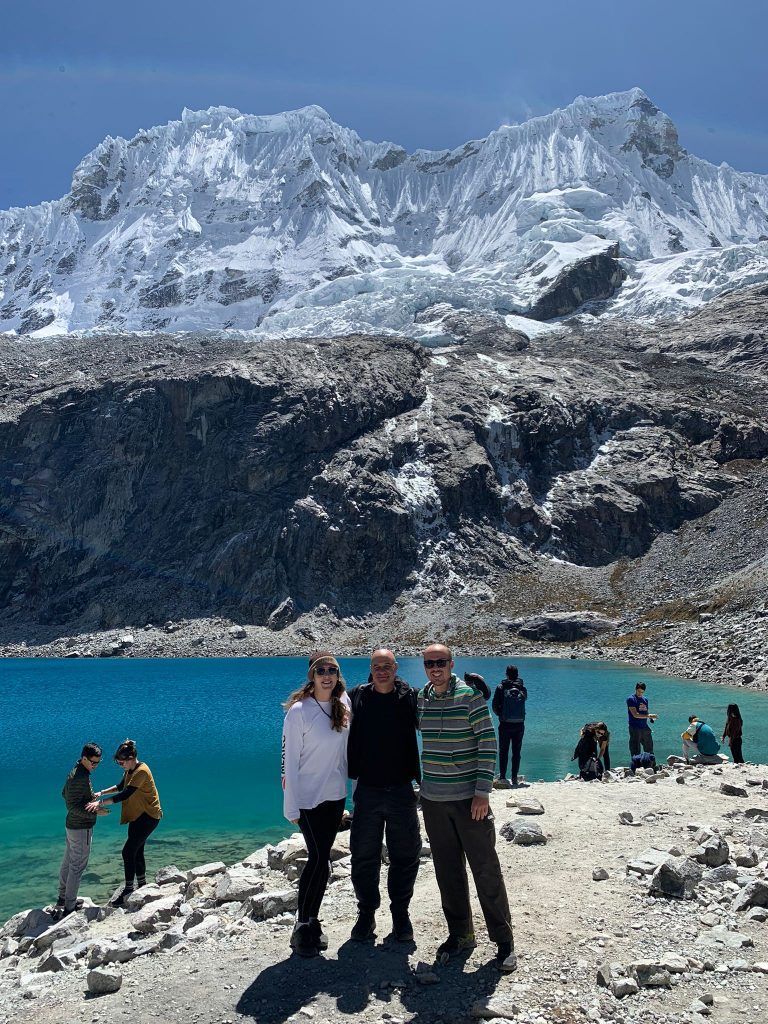
Chavin de Huantar Ruins
“Of all of the ancient cultures I admire, that of Chavín amazes me the most. Actually, it has been the inspiration behind most of my art.” — Pablo Picasso
The Chavin civilization flourished between 900 and 200 BC in the northern and central Andes. It was one of the earliest pre-Inca cultures. The most fascinating thing is that at it’s peak, its religious center at Chaven de Huatar had a population of only about 2,000-3,000 and covered around 100 acres. Yet, pilgrims flocked from all over central Peru for its ceremonies, and its art and religion inspired most of the subsequent Peruvian civilations up to the Incas. And, based on the above quote by Pablo Picasso, that influence spread into our current times.
From the World History Enclyclopdia: “Chavin art is full of imagery of jaguars, snakes, and raptors, as well as supernatural beings, often with ferocious-looking fangs. Creatures are often transformational – presented in two states at once – and designed to both confuse and surprise. Images are also very often anatropic – they may be viewed from different directions.”
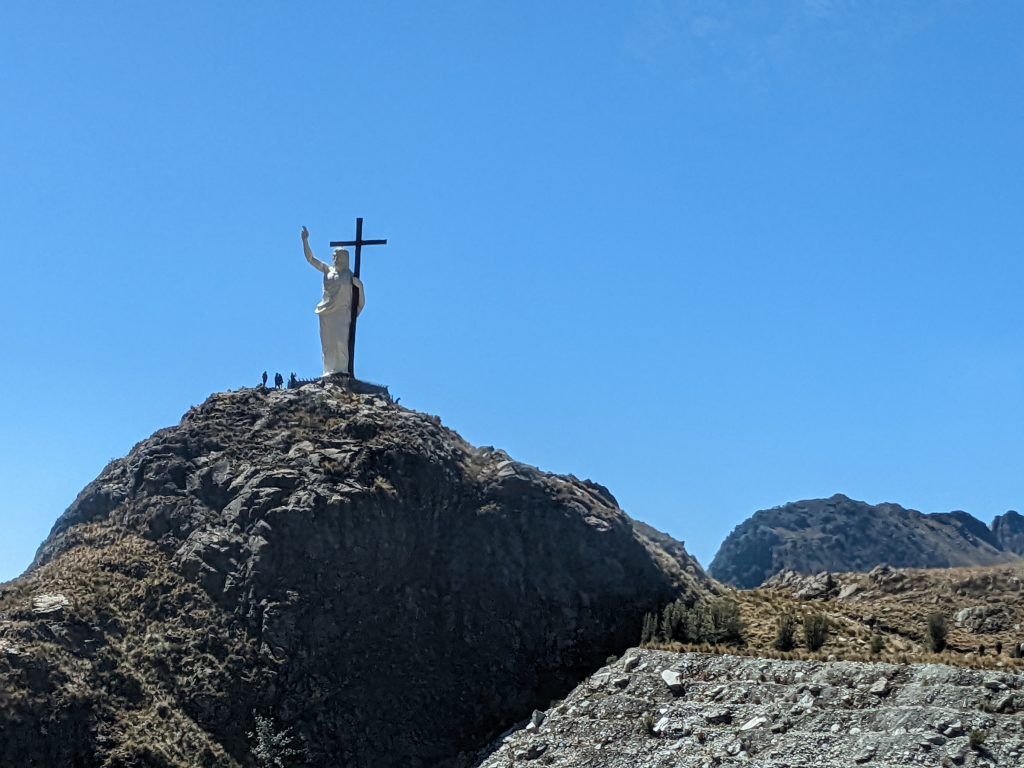
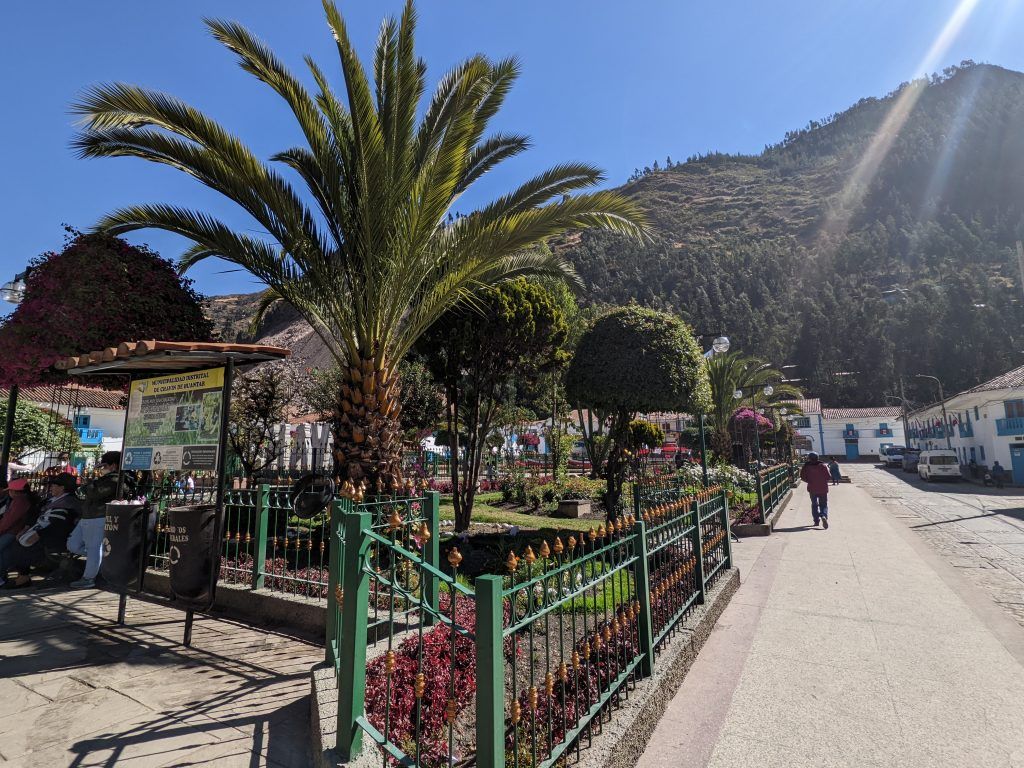
As you can see below, the main temple area was not very large.
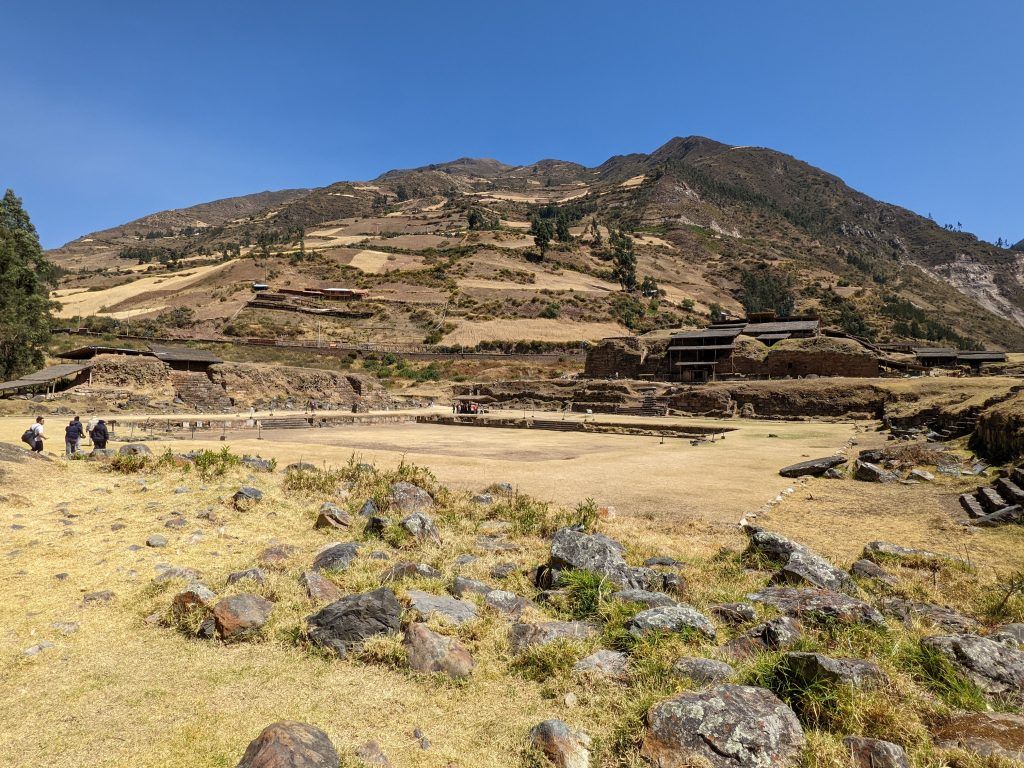
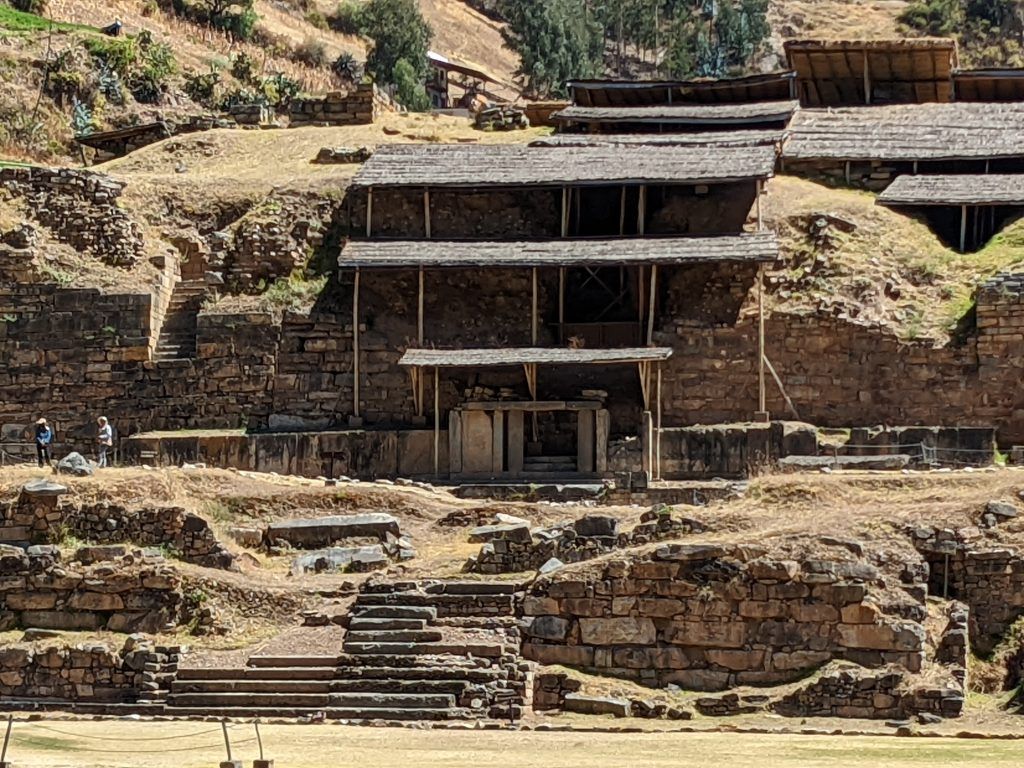
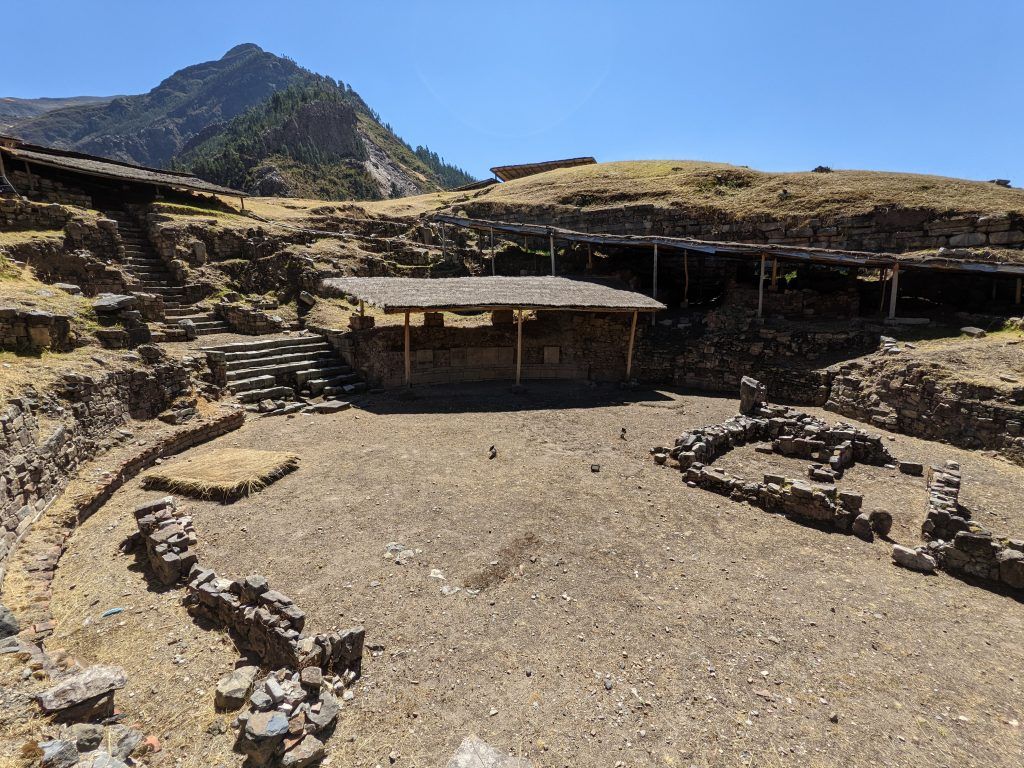
The most amazing part of the ruins is that the structure had over 2km of tunnels going underneath it. From a really informative BBC article: “Lost in a labyrinth of underground tunnels lit by sunlight, adorned with stone carvings that appear to roar at passers-by, water that rushed up to meet them, visitors would have been completely disoriented by the experience. ‘It was a convincing system,’ says Rick. ‘And it pushed the innovation of advanced technology. They were using hydraulics, acoustics, mirrors, psychoactive drugs. They made water dance and sing by its motion through canals. The creators of the temple were pushing their scientific understanding forwards. This is a way of showing off but in a very serious – cultic – sense.'”
There’s a lot more interesting facts about this amazing culture in the article itself:
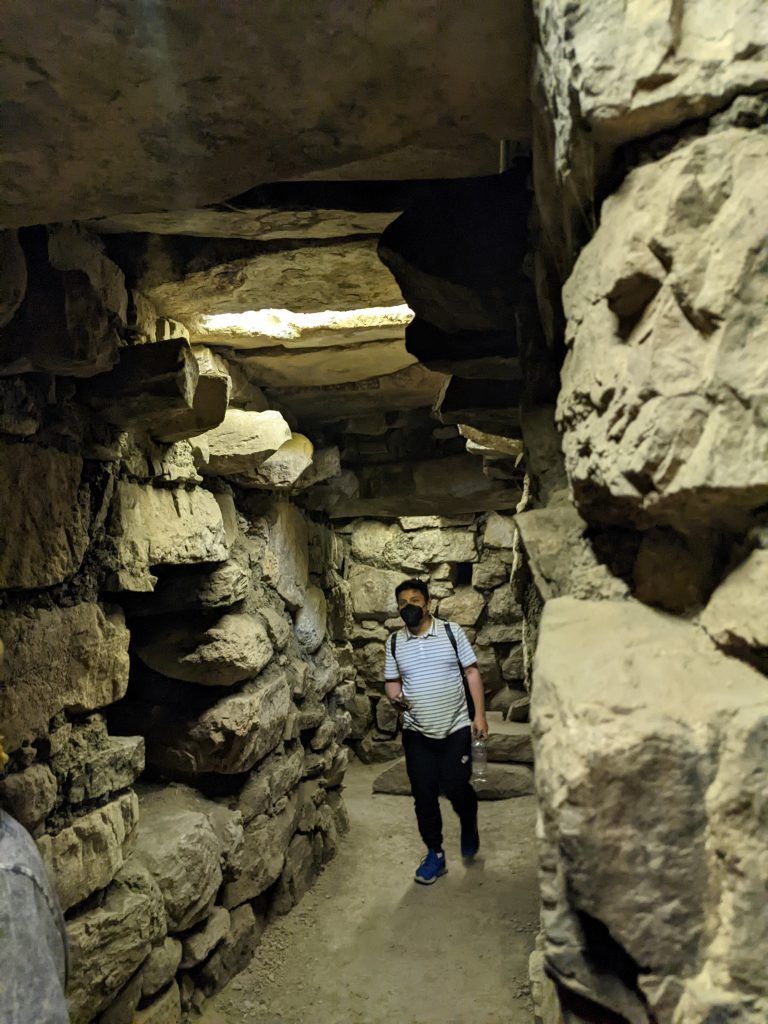
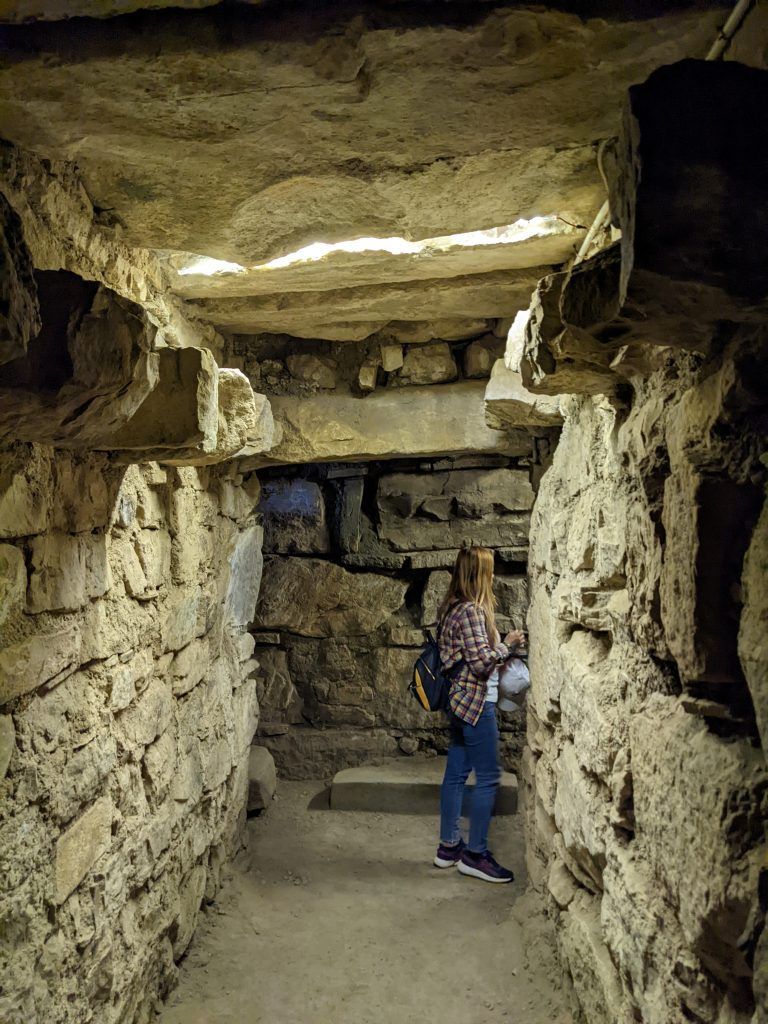
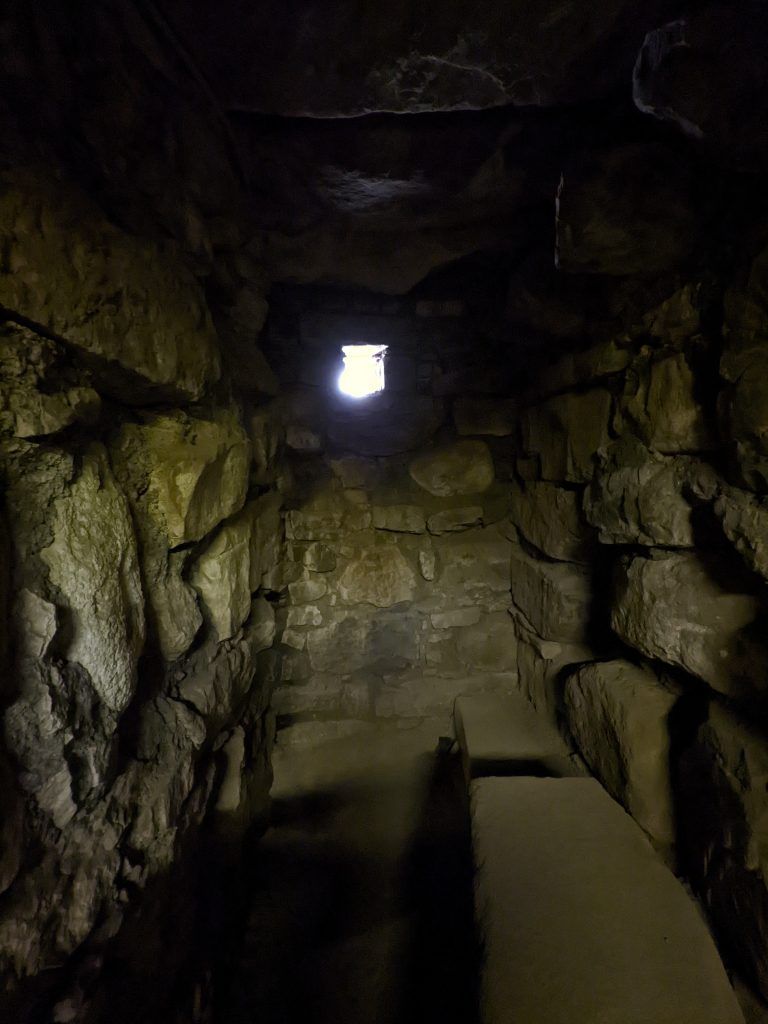
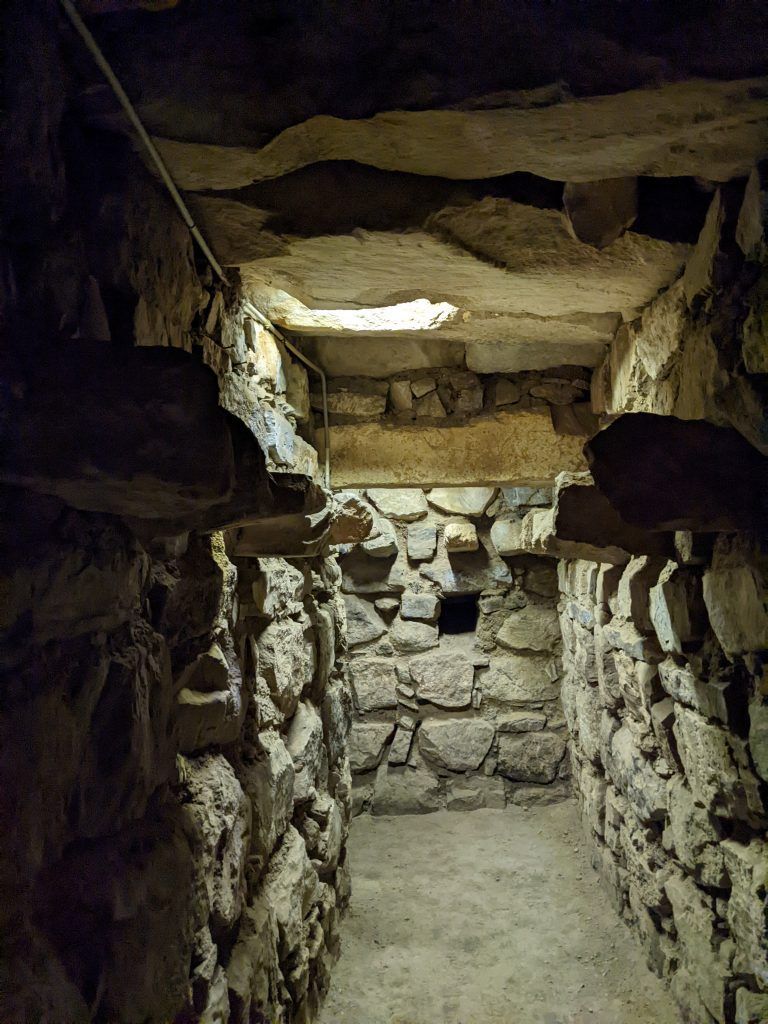
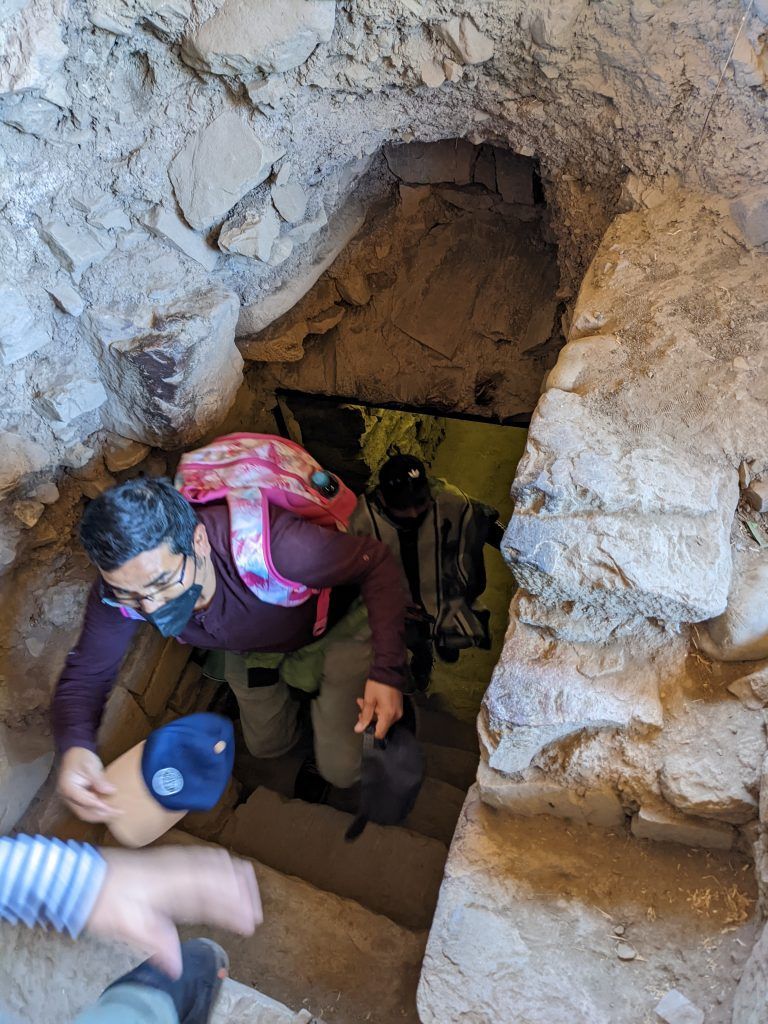
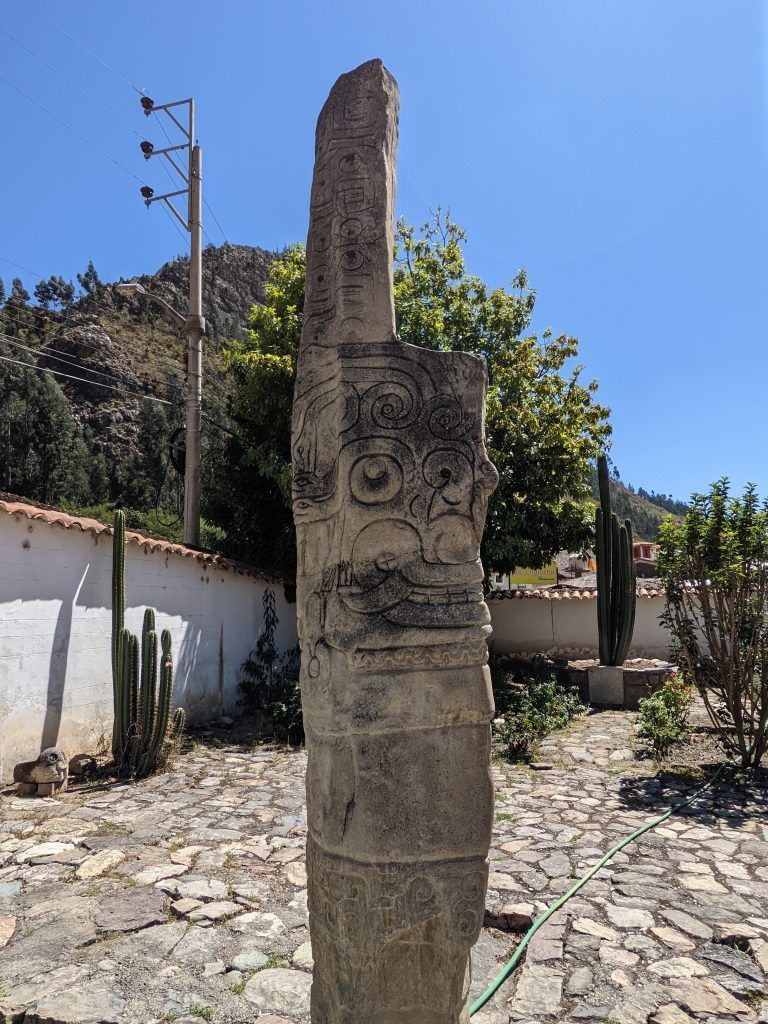
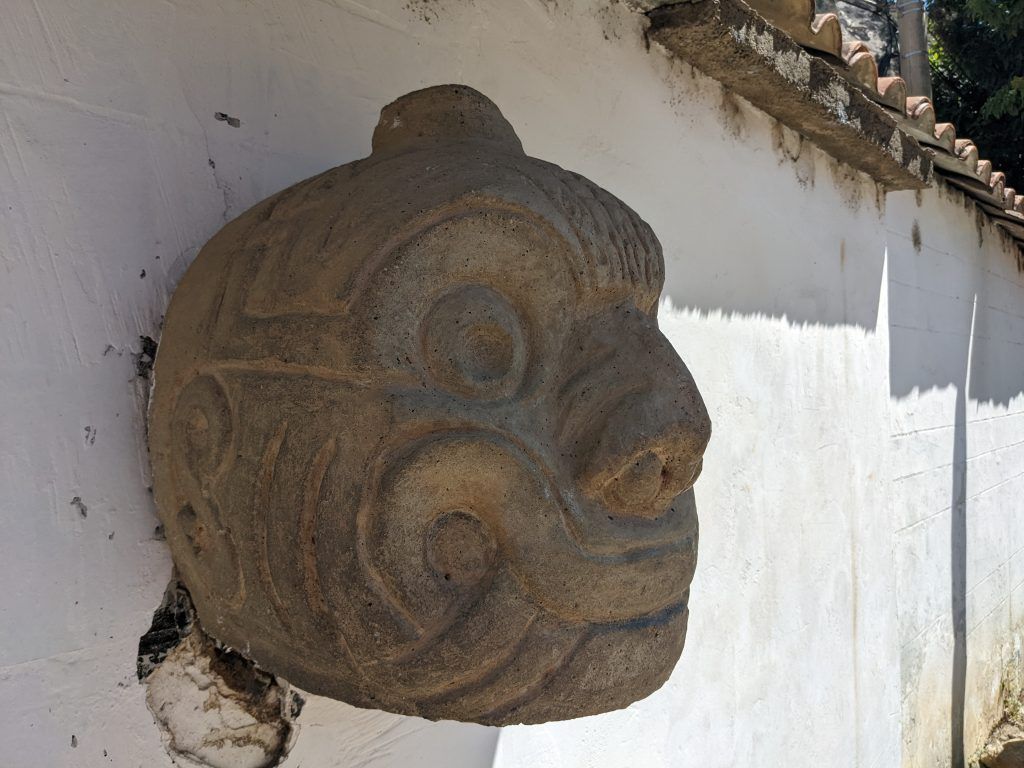
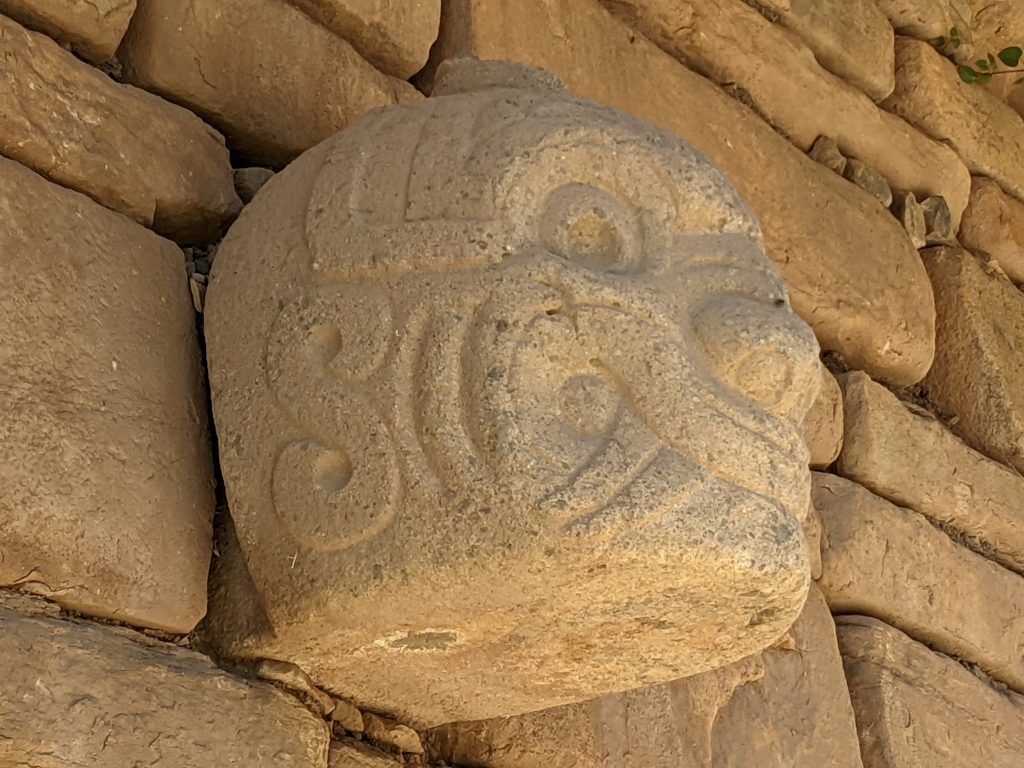
After visiting the site, we visited the nearby museum where many of the really amazing heads from the site were displayed. I guess I’ll now have to look at Pablo Picasso’s work again to see if I can see the Chavin influence.
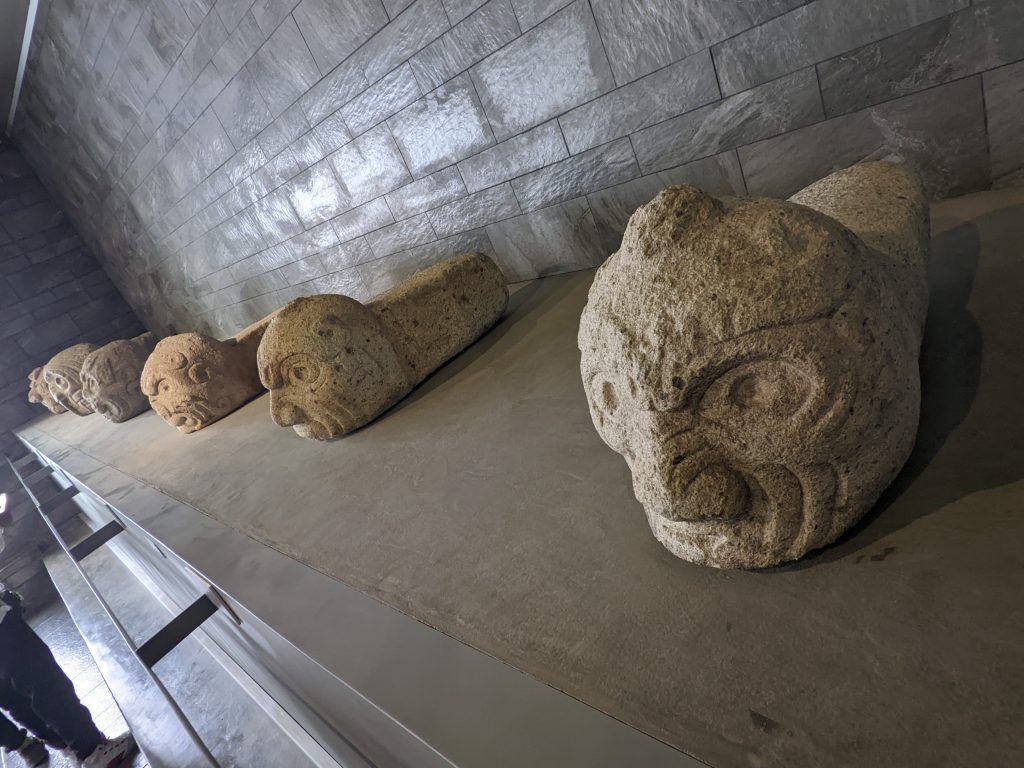
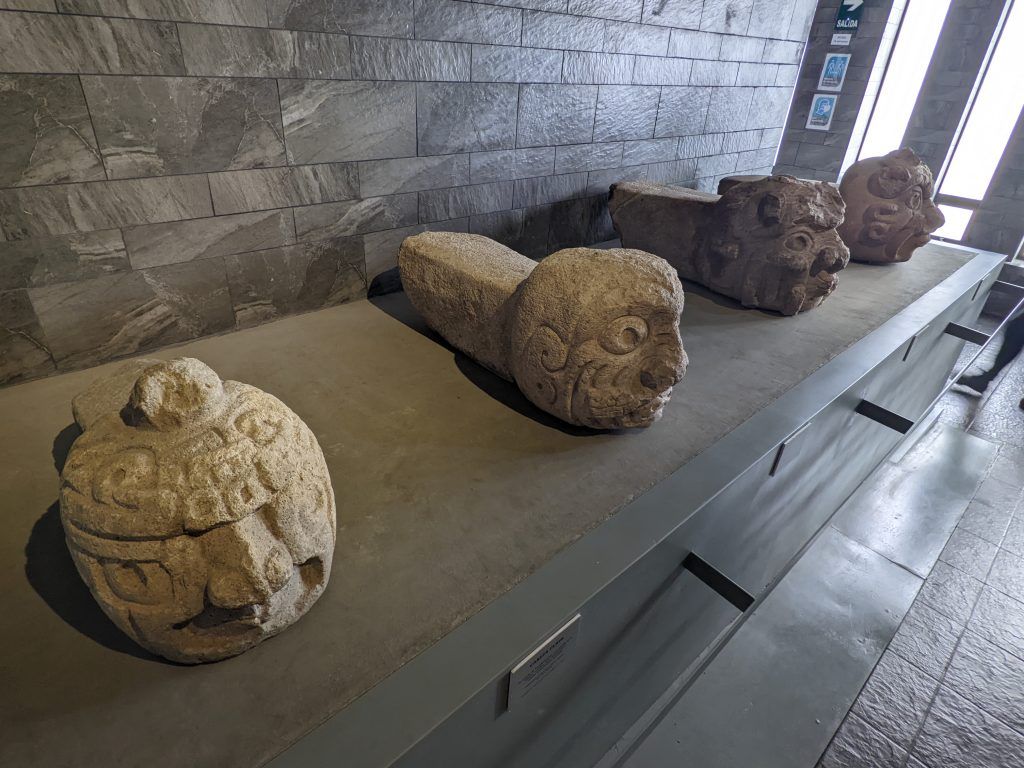
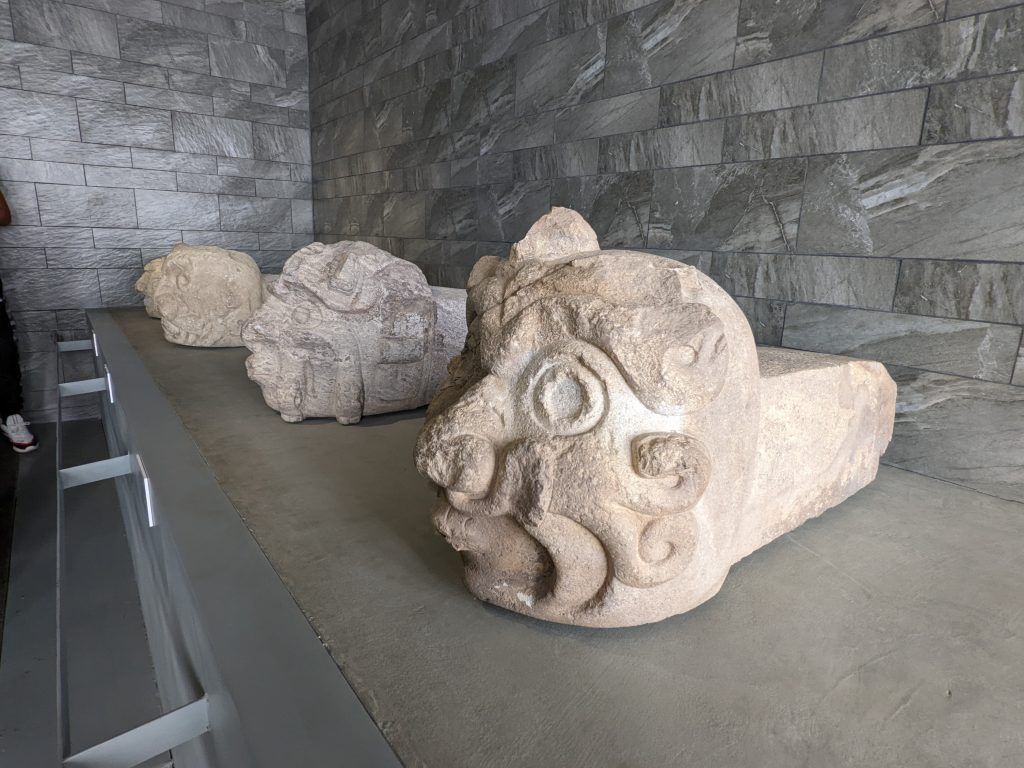
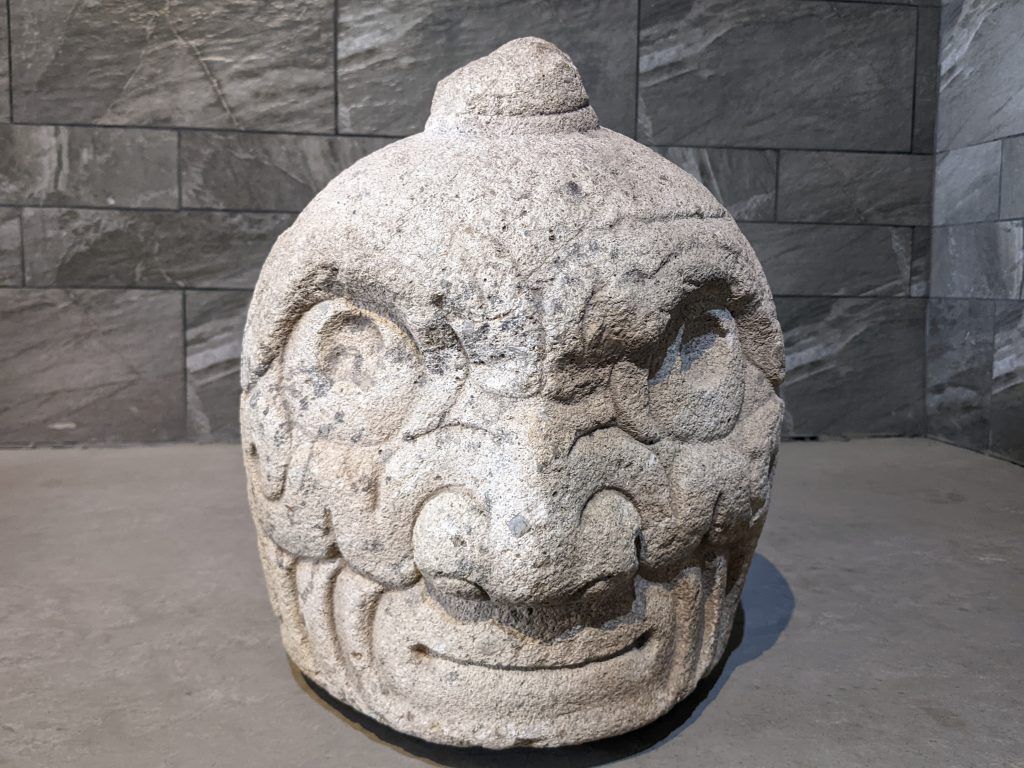
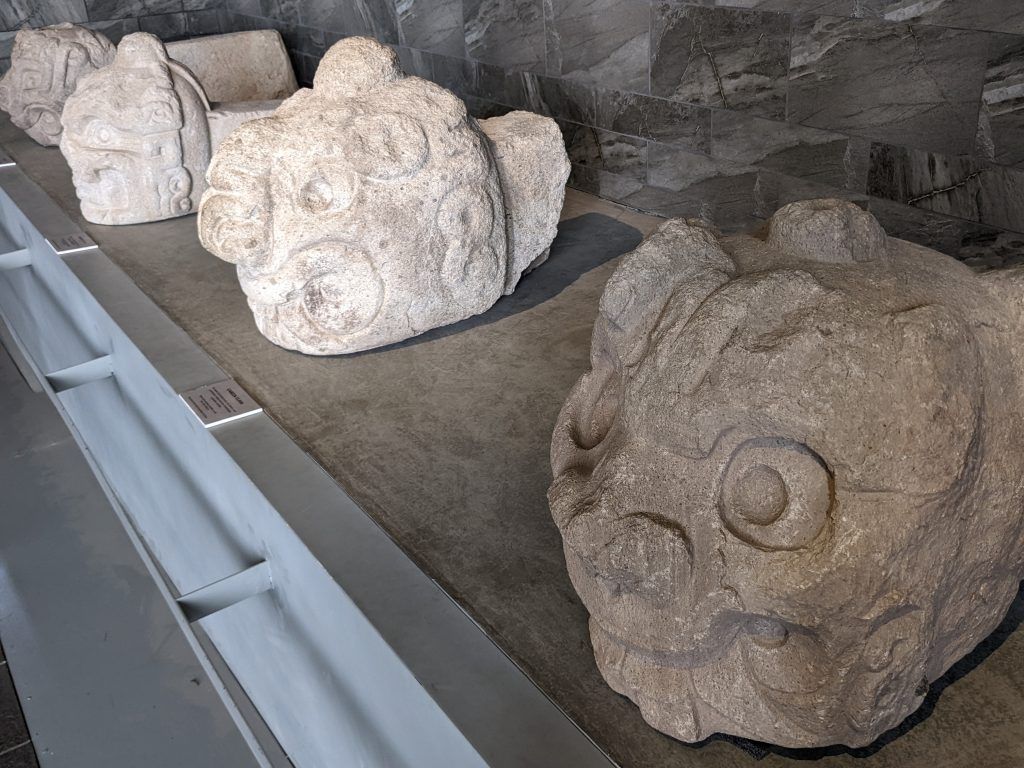
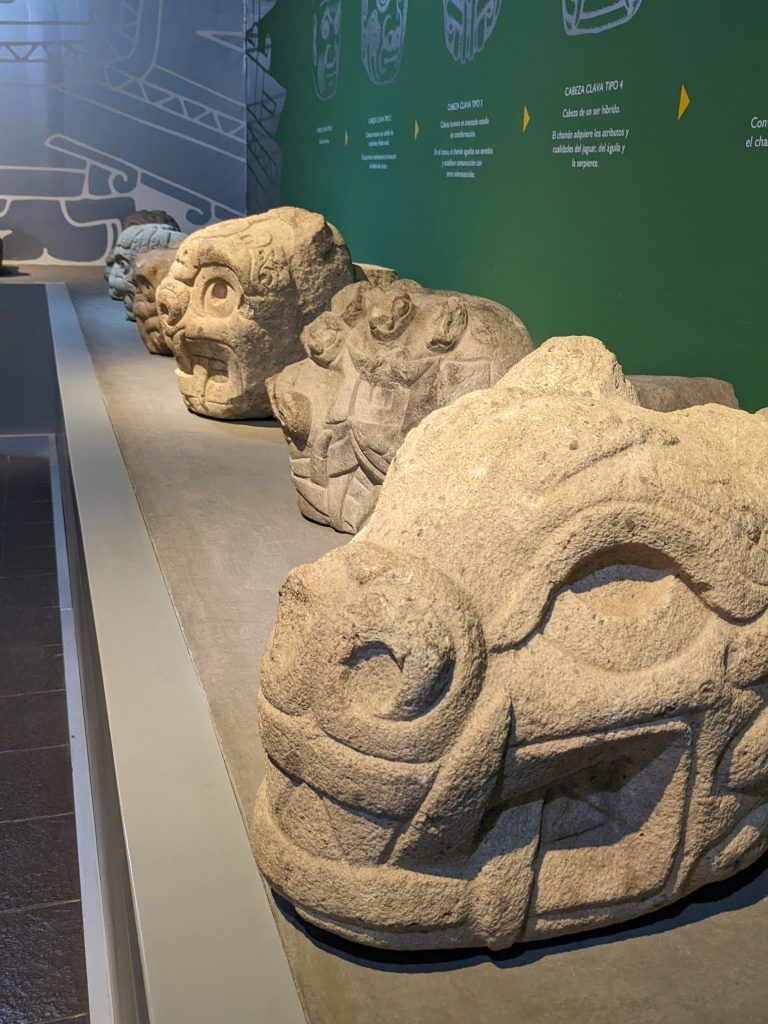
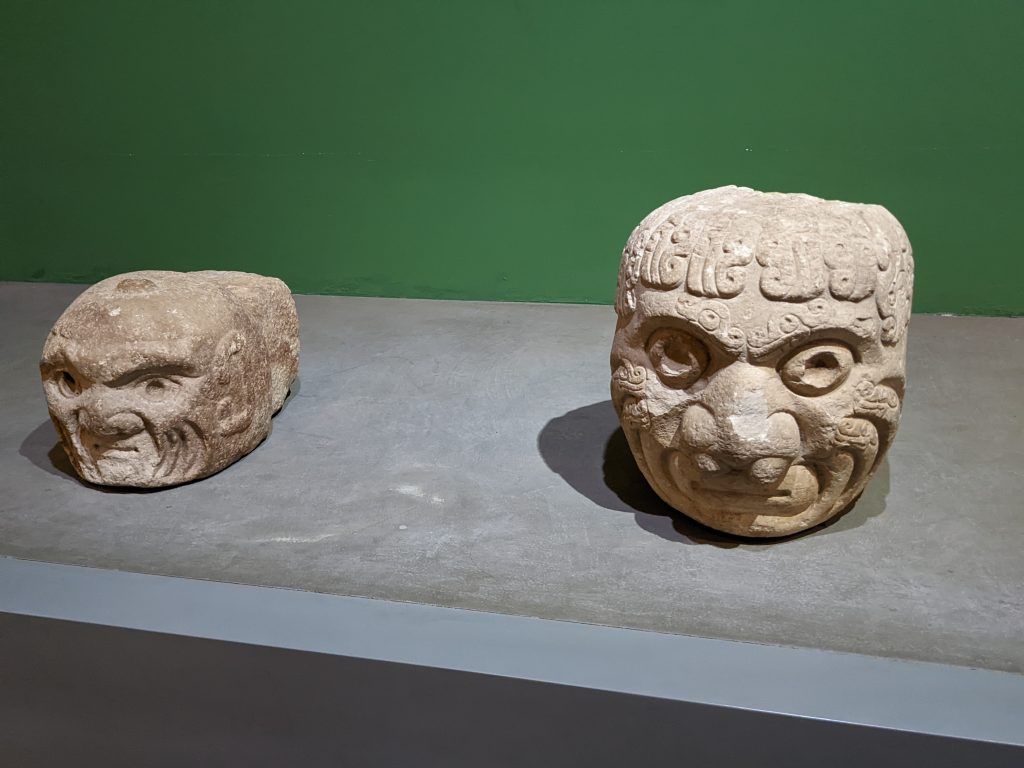
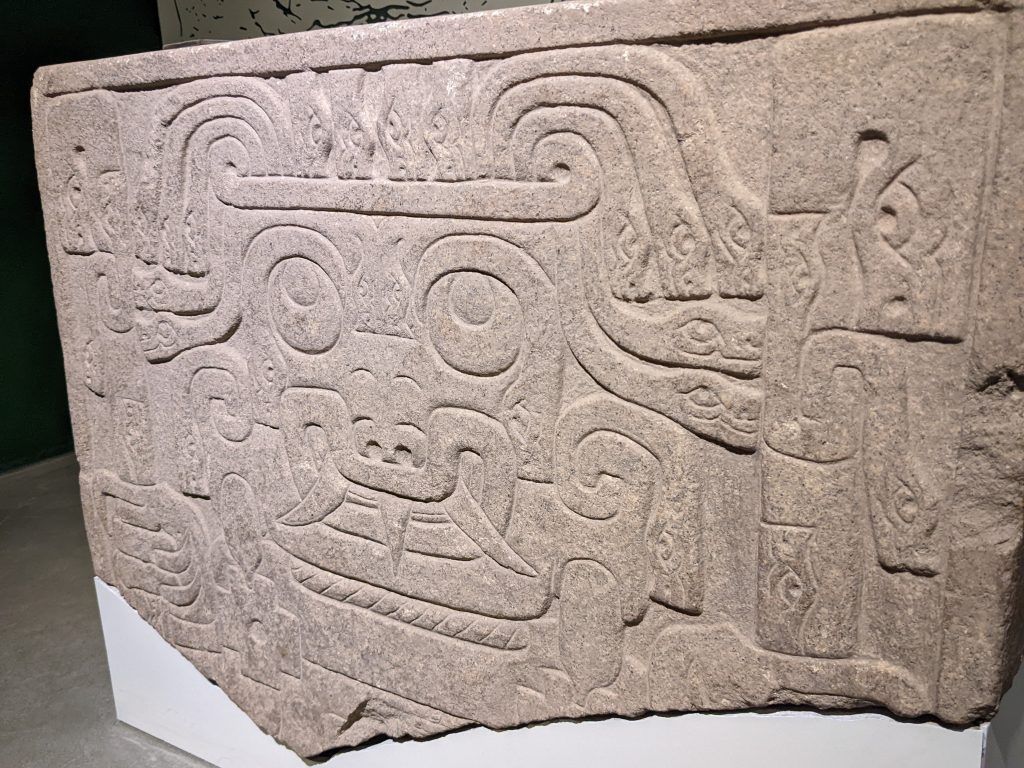
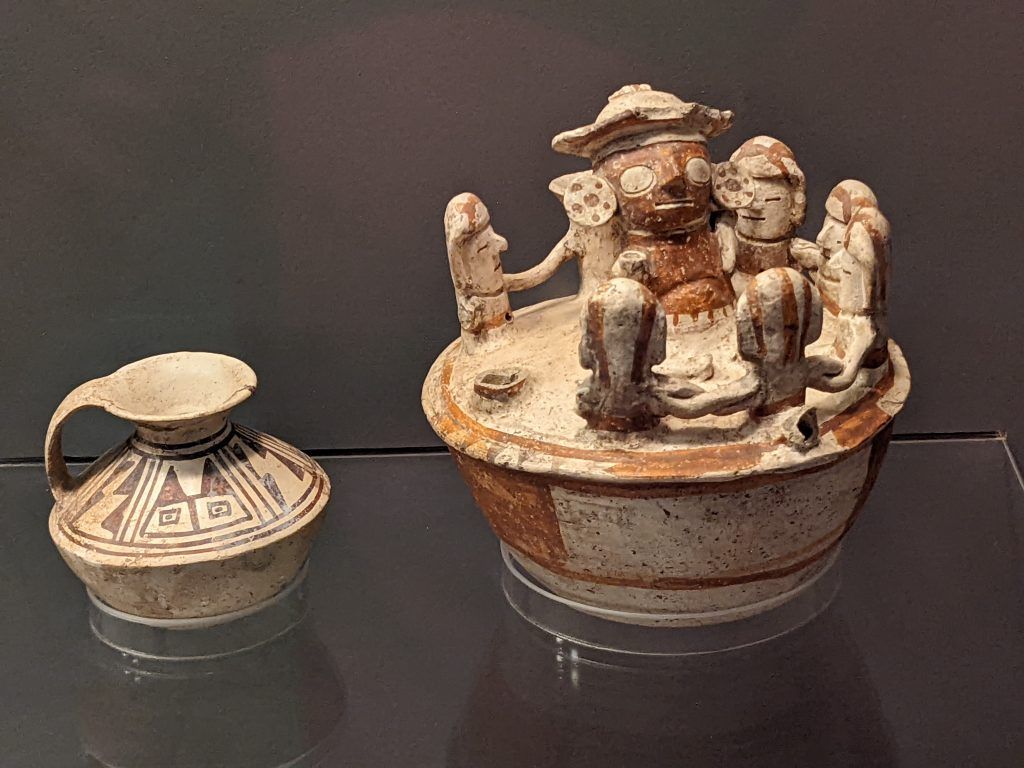
The Hills of Huaraz
There’s a really nice trail in the hills behind Huaraz that provides some relaxed hiking and, more importantly, some amazing views of the surrounding Andean mountains, many of which are over 6,300 meters (20,700 feet).
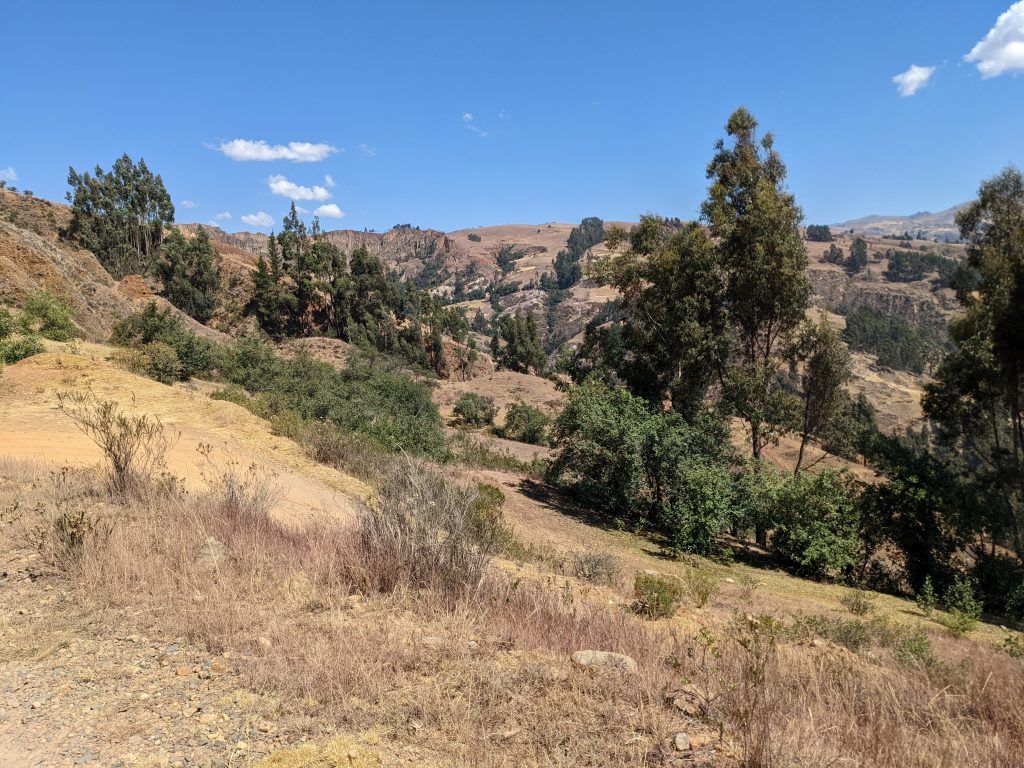
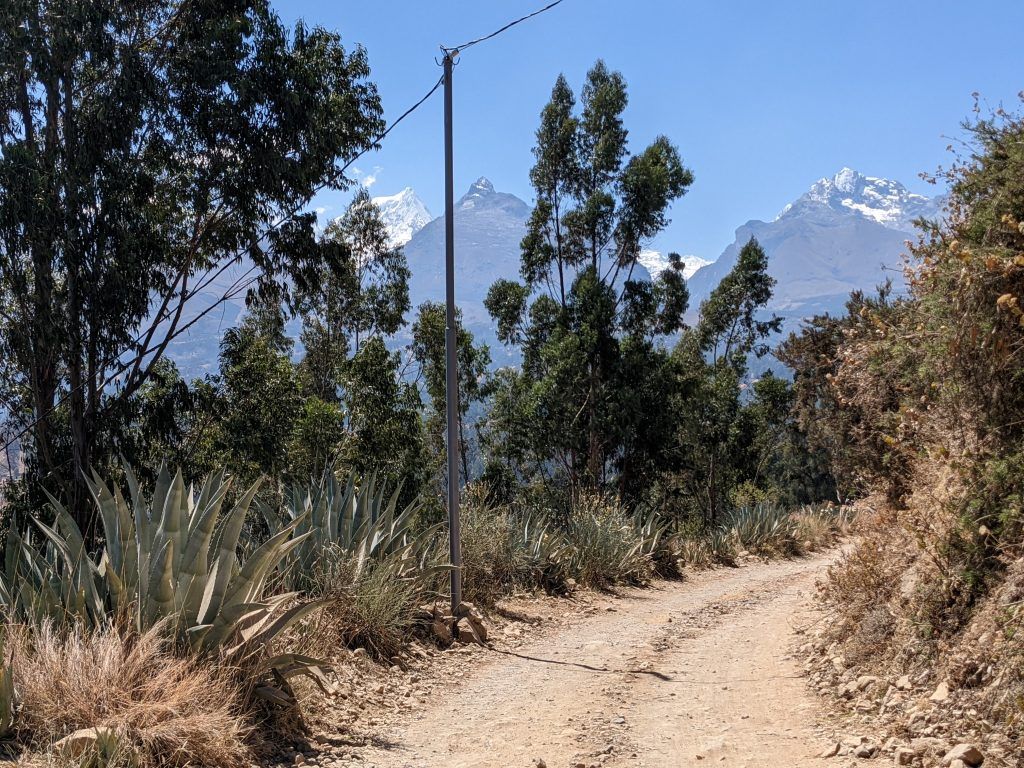
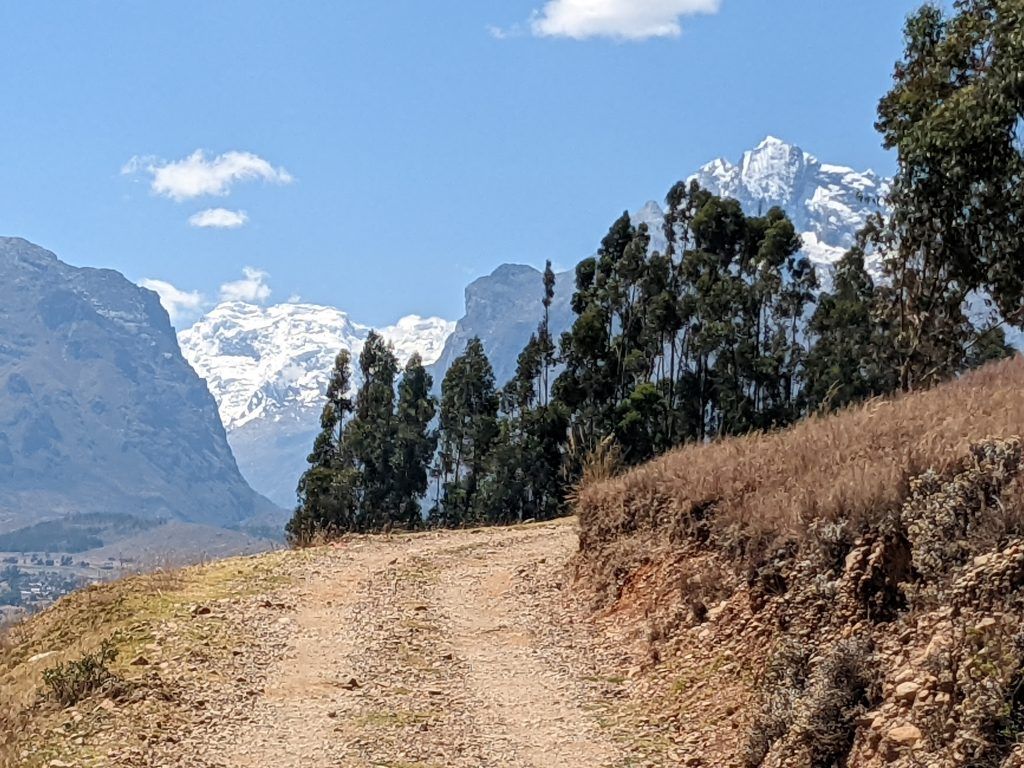
These mountains rise like clouds to the north of the city.
